If you are an individual who likes to live an active lifestyle, you really have a tough decision to make when car shopping: will it be a wagon or a sport-utility vehicle? Whether you're a musician or a surfer, space is a precious must have when shopping for a vehicle.
And it seems that Volkswagen recognizes this. While many companies are abandoning wagons in favor of compact SUVs and other entry-level SUVs, VW will be bringing the Sportwagen back. This time though it will be called the Golf Sportwagen as a formality.
Volkswagen Golf Sportwagen
Starting at about $21,000 with a manual 'box, the Golf Sportwagen is an enticing and reasonably priced alternative in the marketplace. And, when you consider that the MKVII Golf has earned itself some mighty accolades in 2014, this may be the go-to choice for those looking for something to get around in and boasts significant utility.
In addition to the 1.8-liter, four-cylinder motor that produces 170 horsepower and 199 lb.-ft.of torque, VW will offer a clean diesel TDI that churns out 150 horsepower and 236 lb.-ft. of torque from a 2.0-liter, four-cylinder mill.
**For MORE details about the 2015 VW Golf Sportwagen, check out the photos and company-issued release below!
Volkswagen Golf Sportwagen
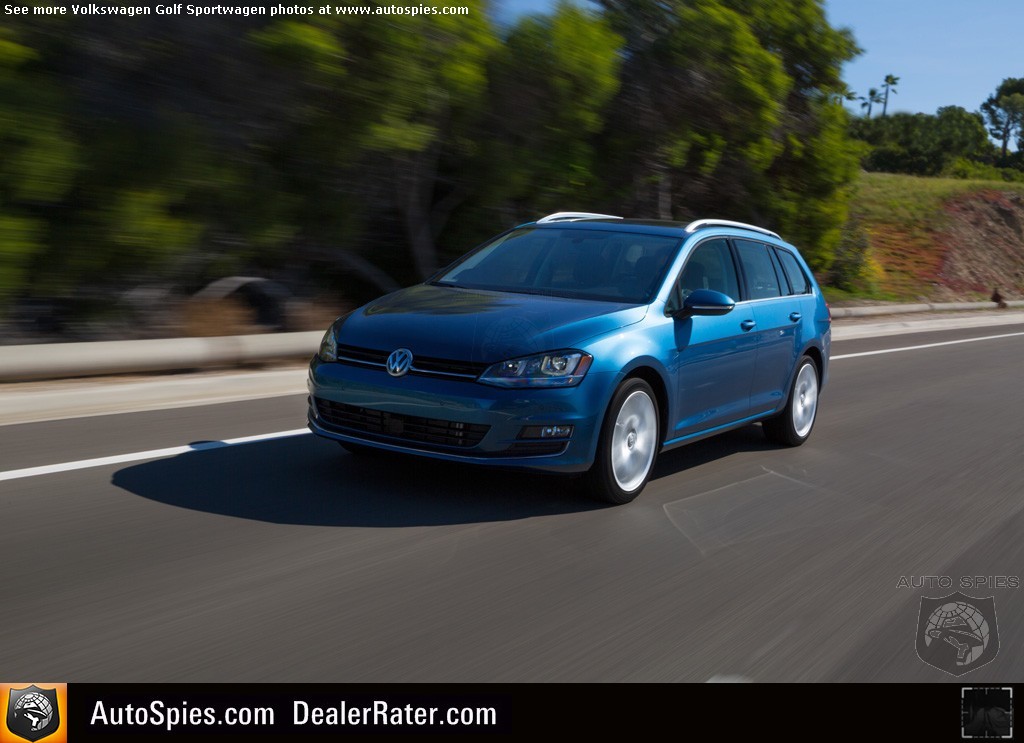
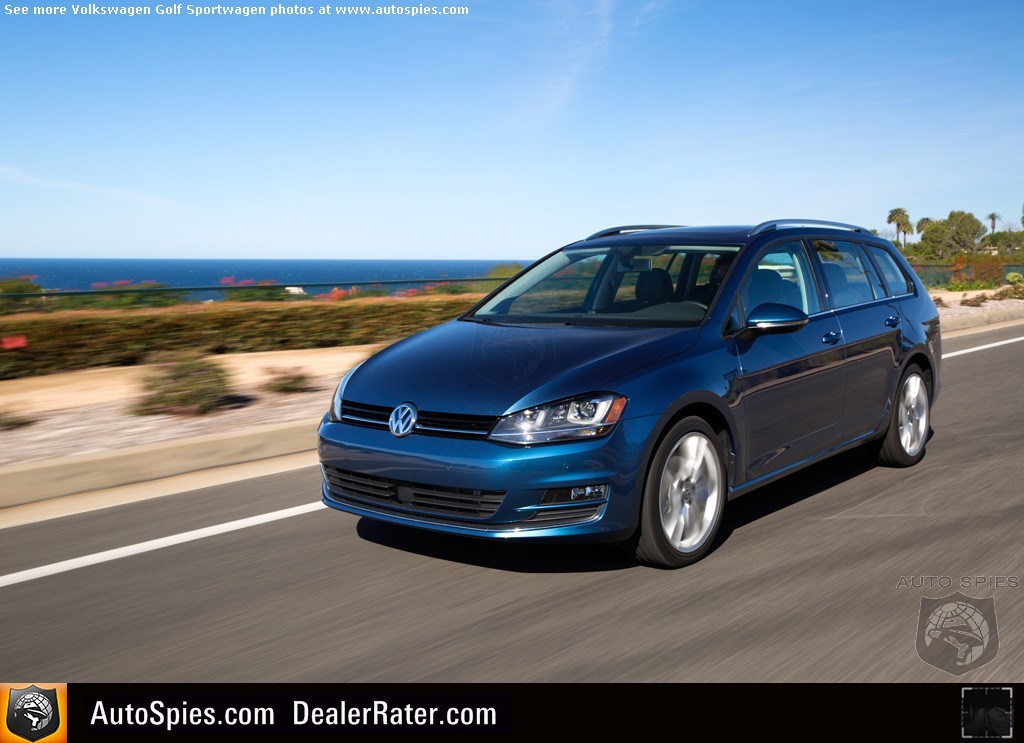
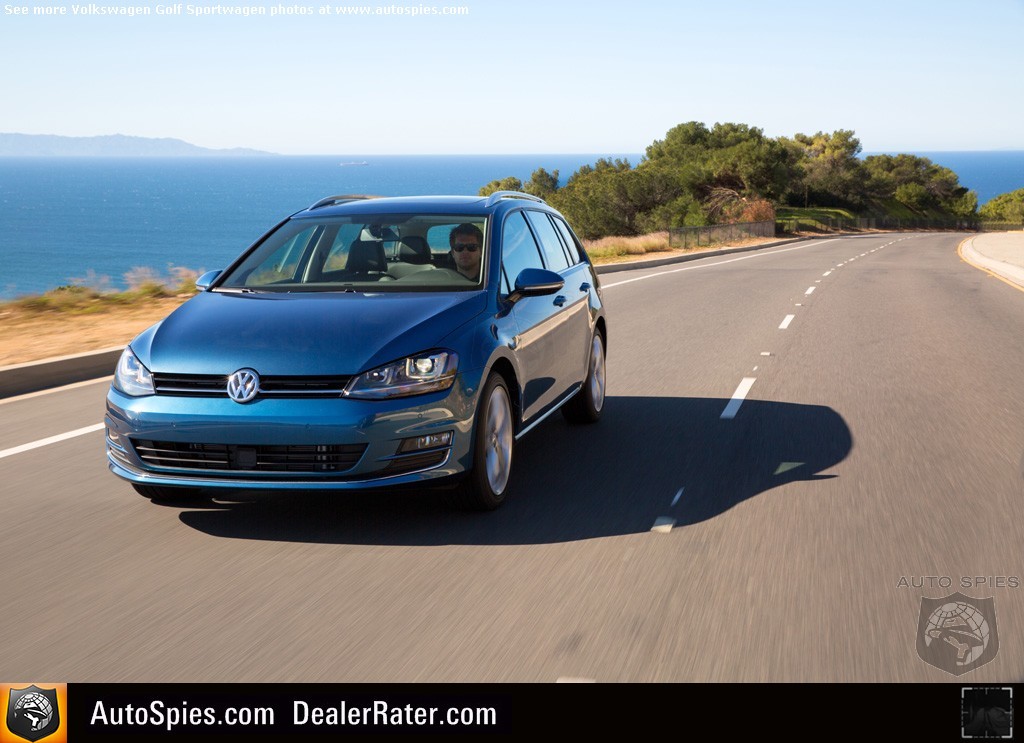
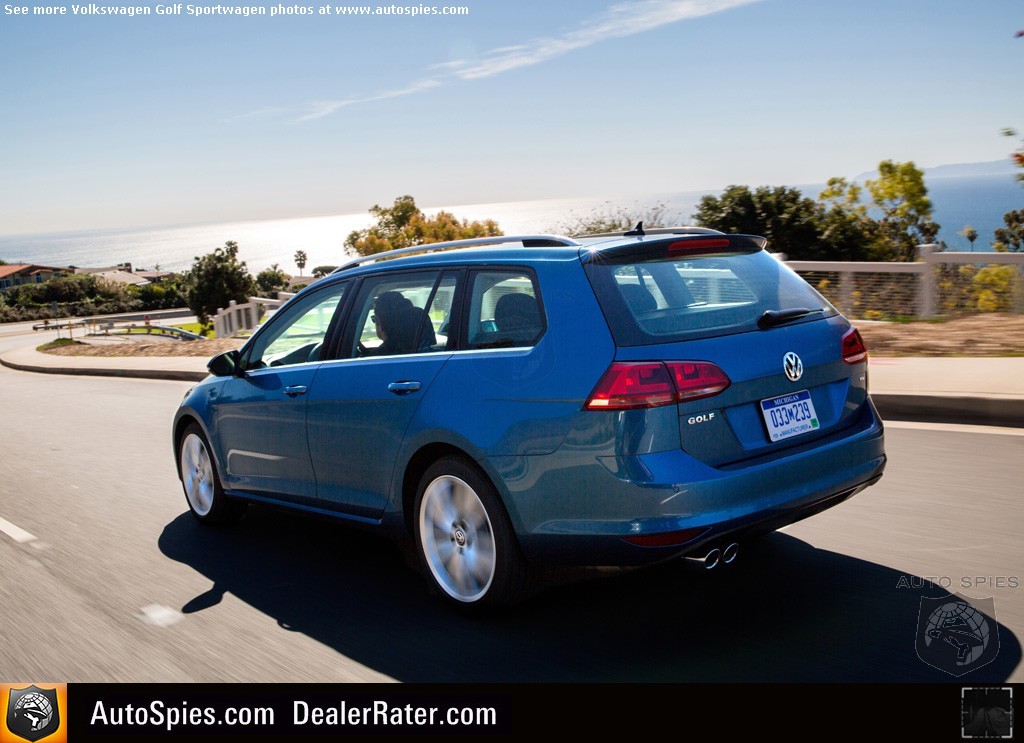
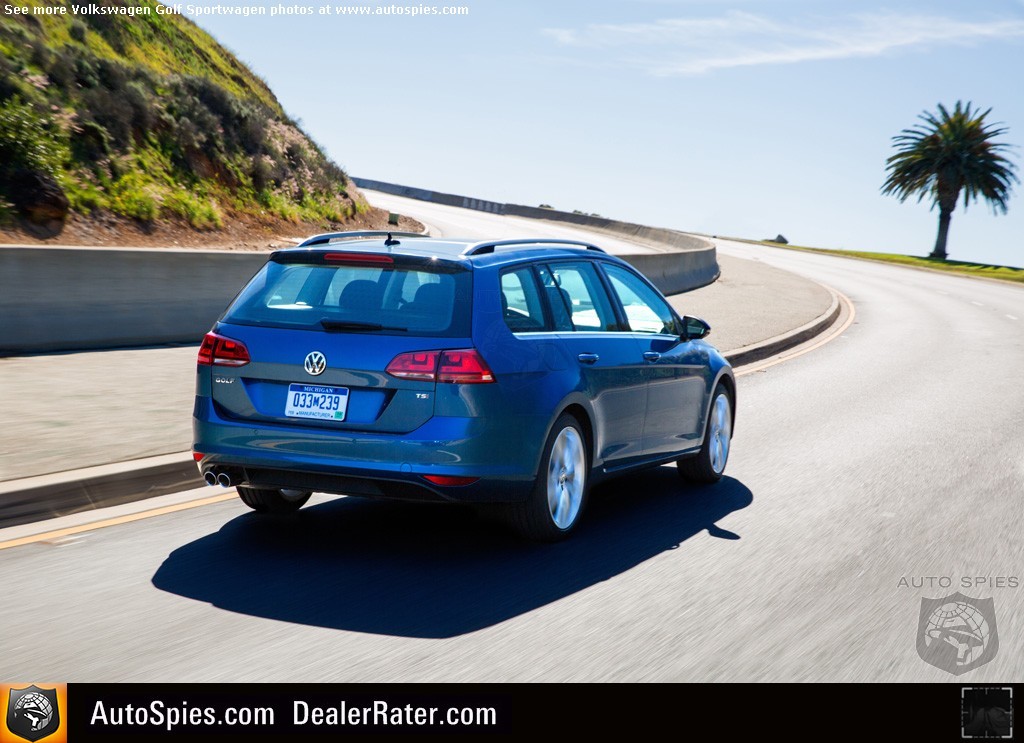
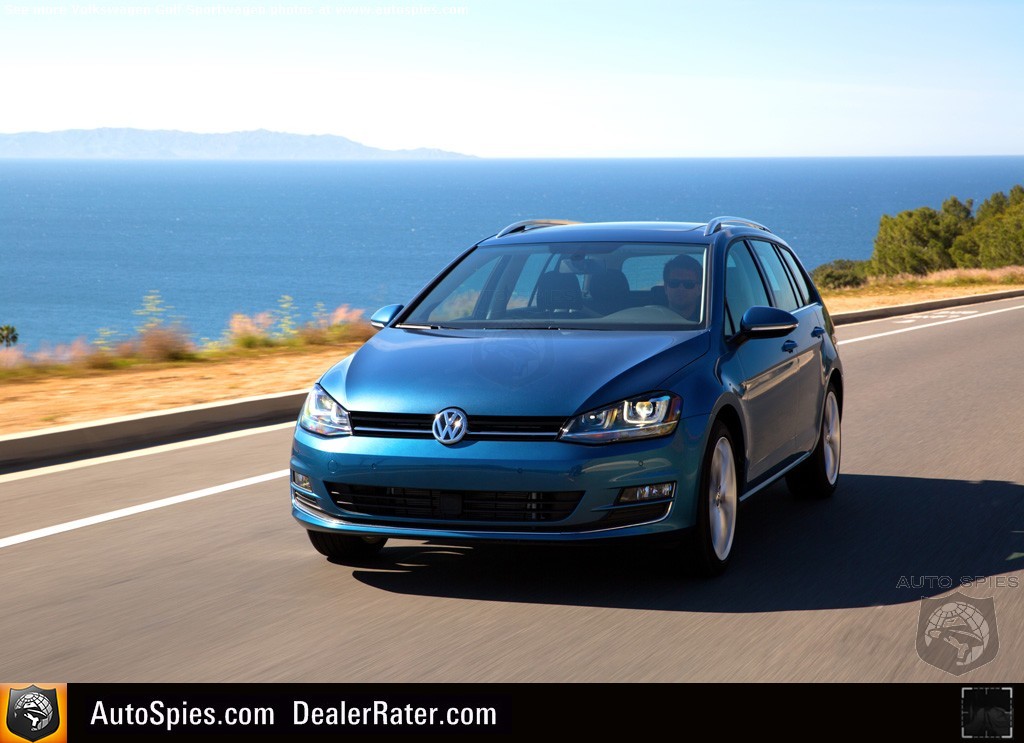
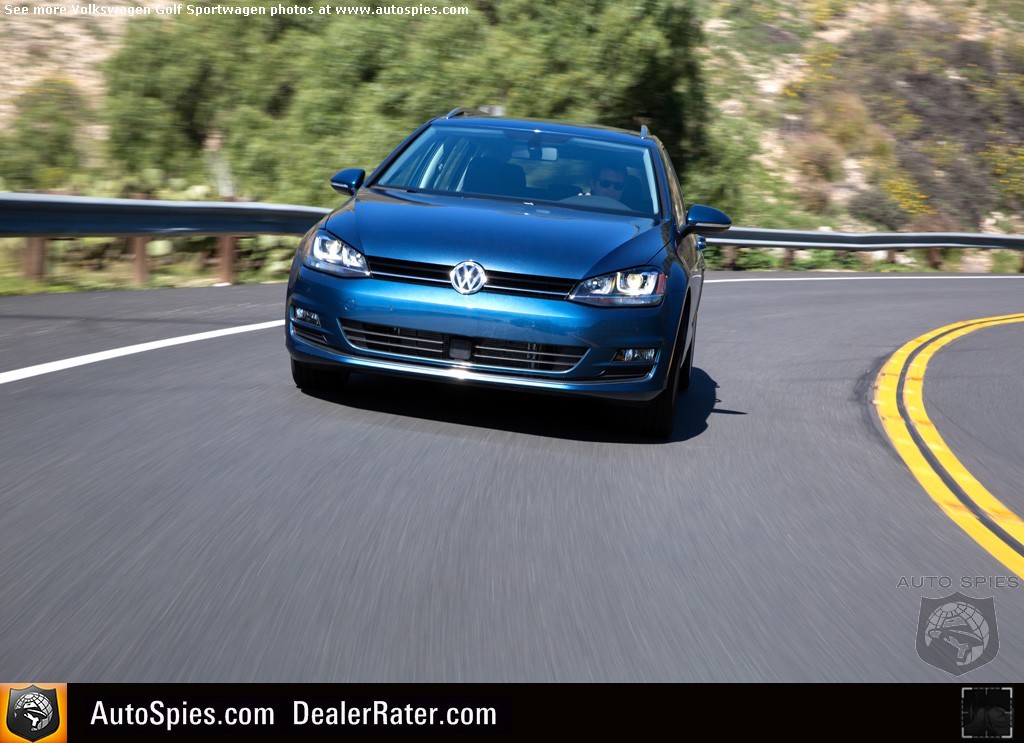
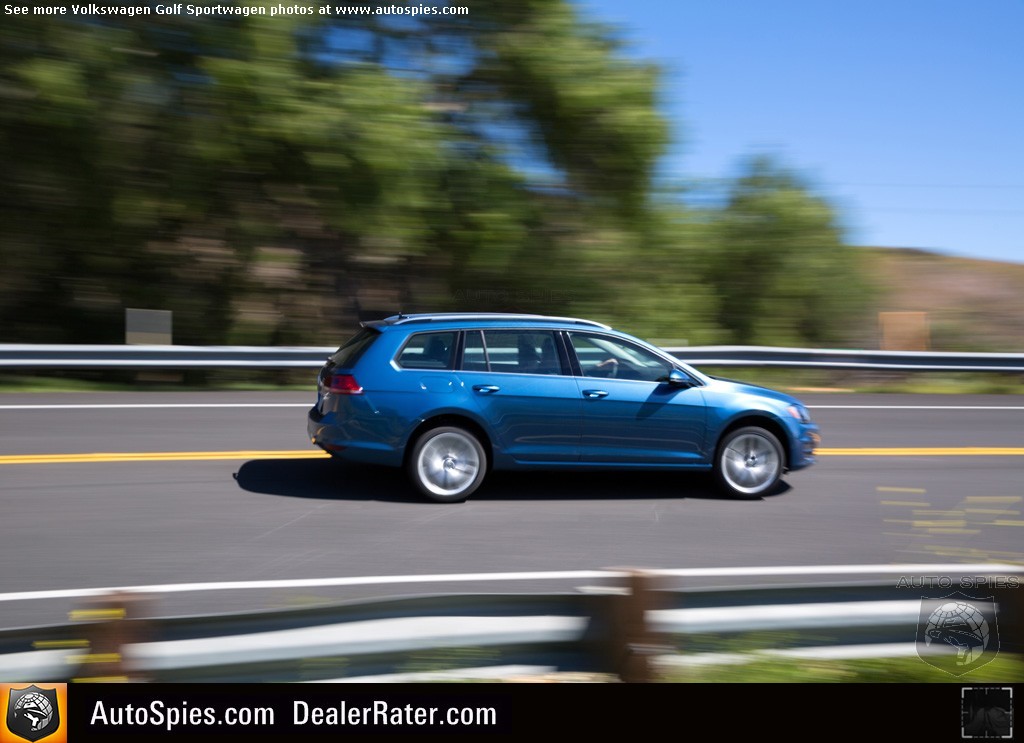
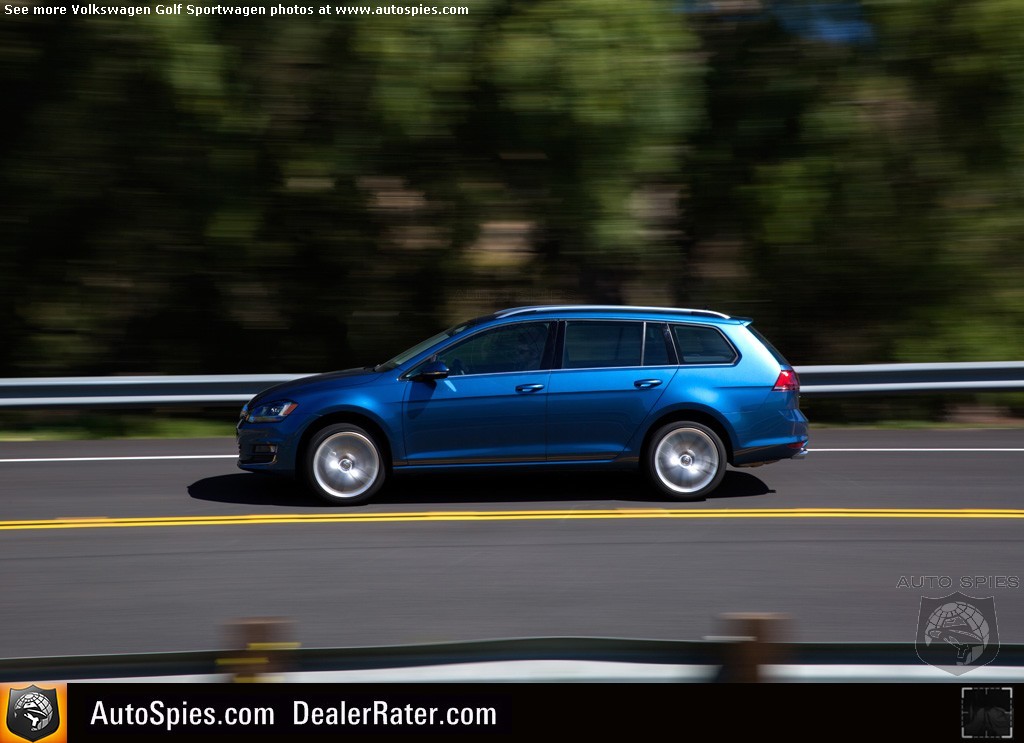
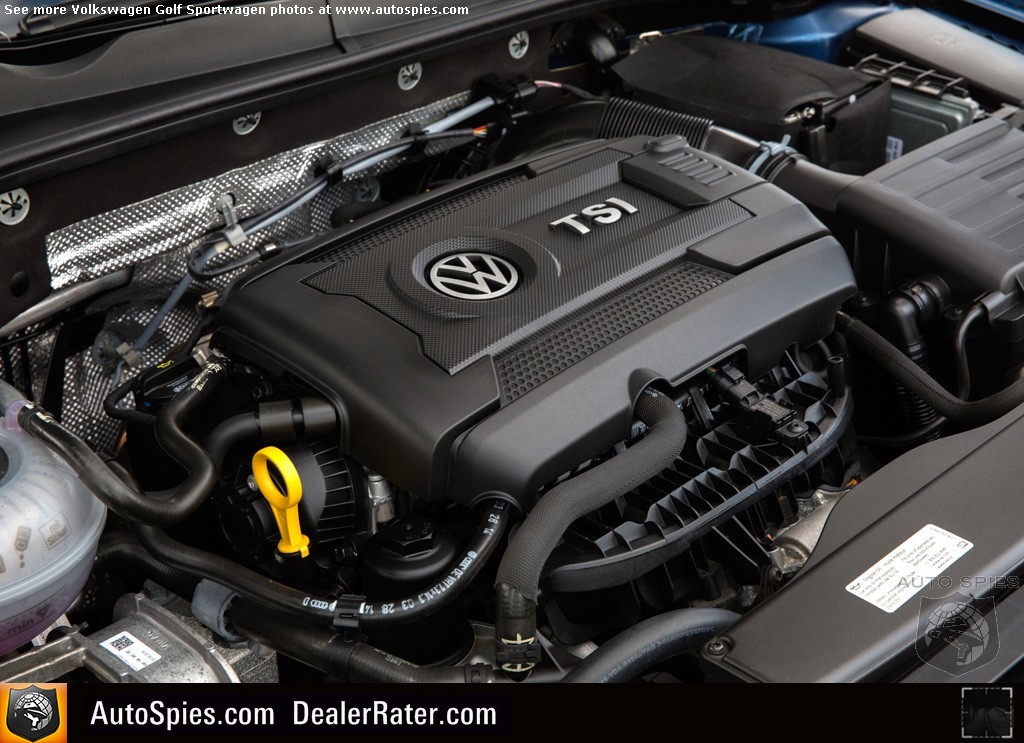
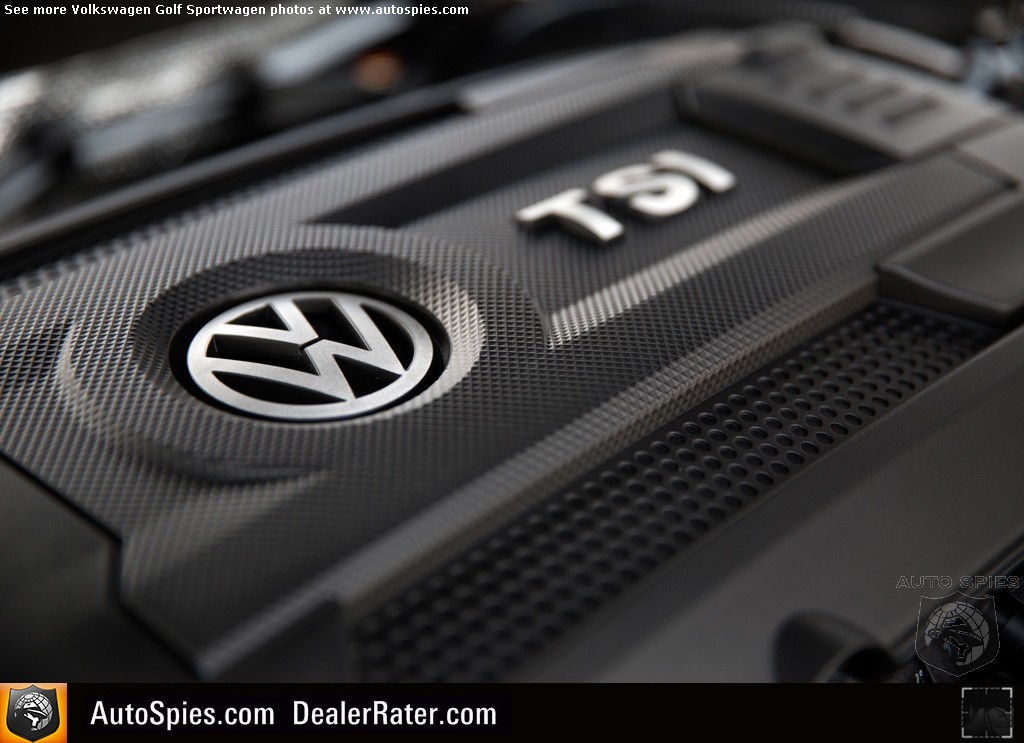
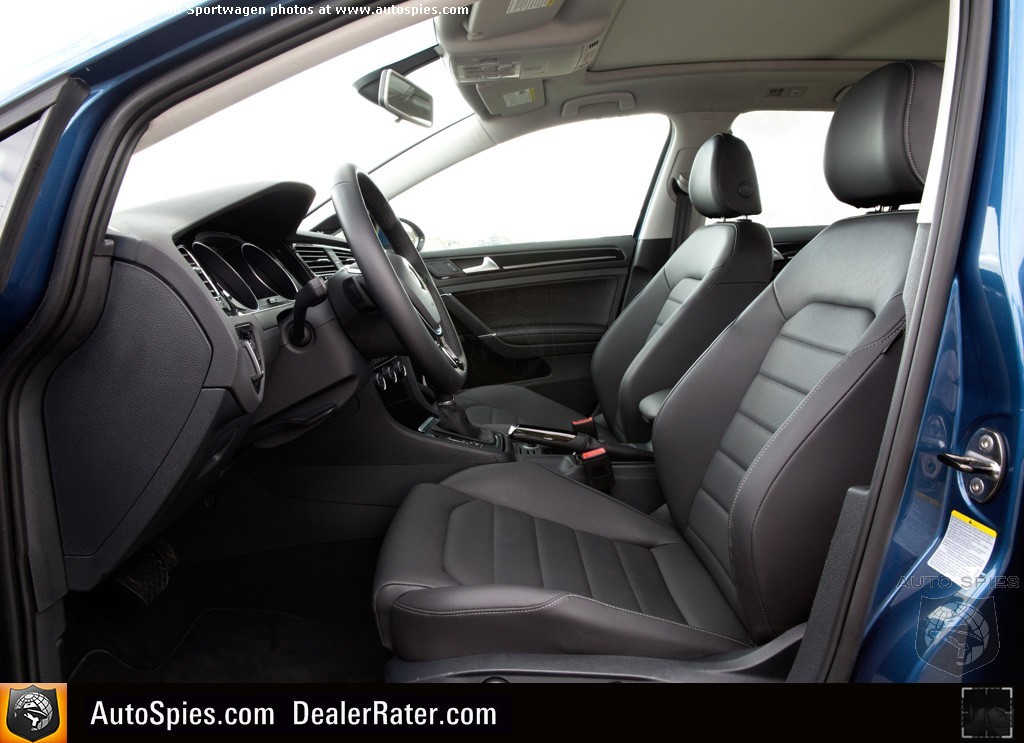
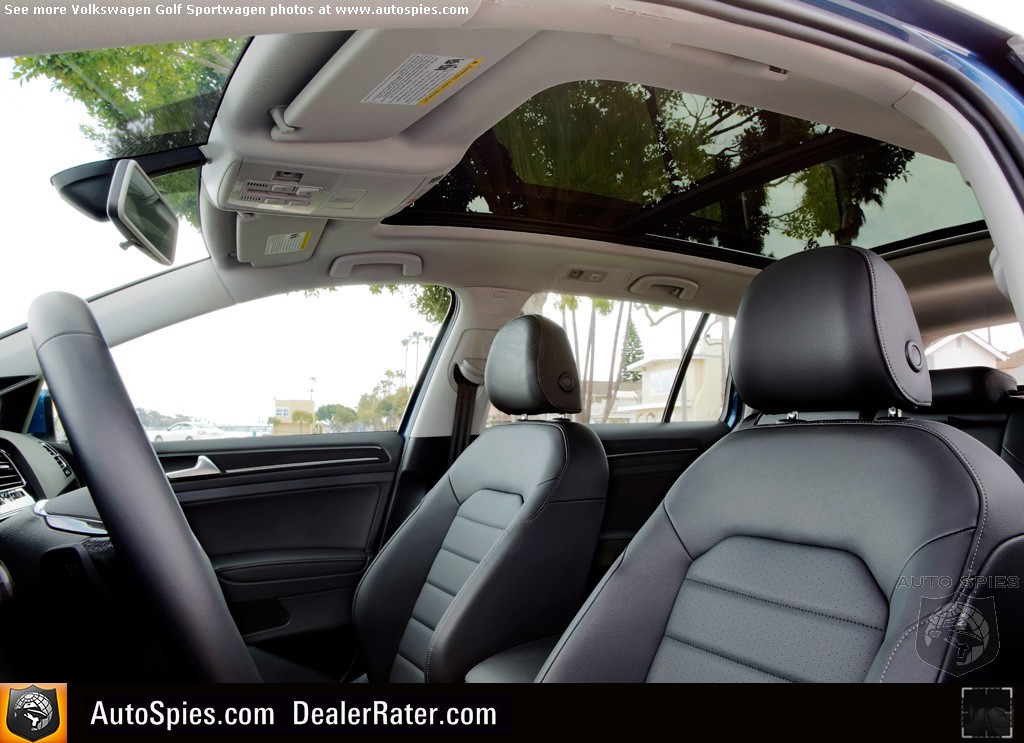
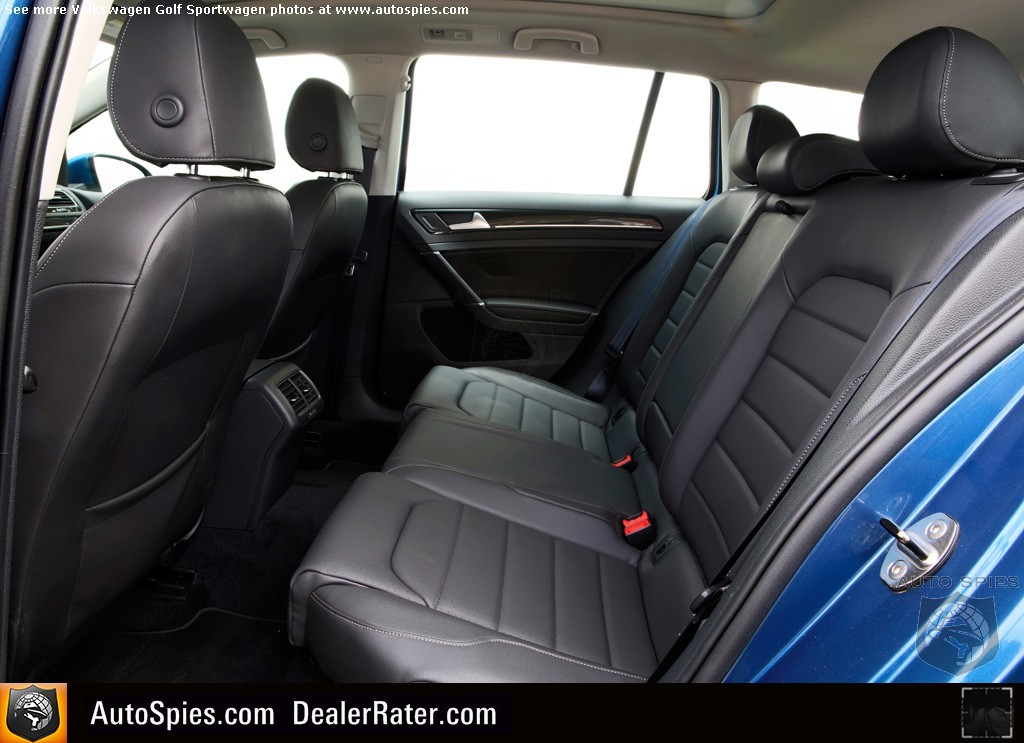
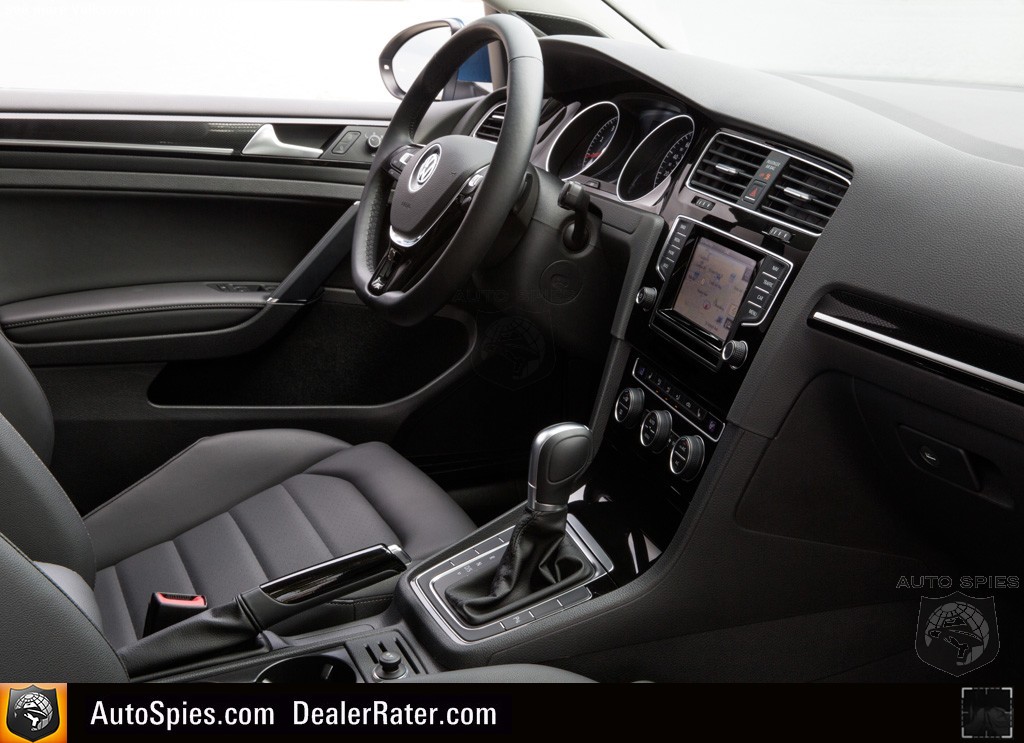
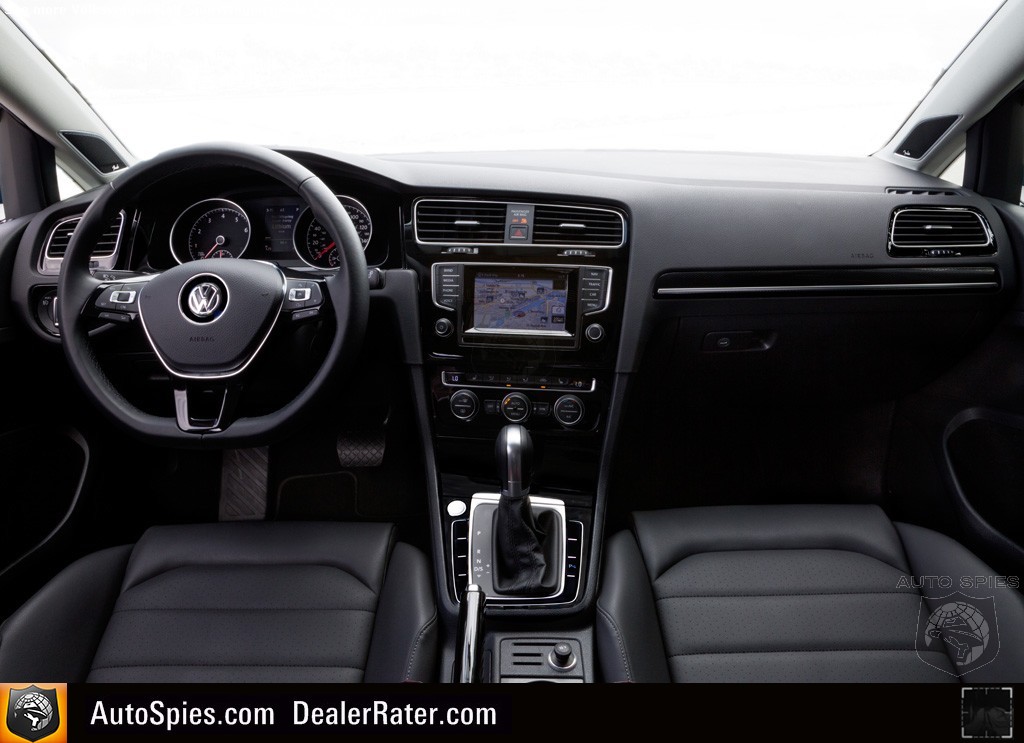
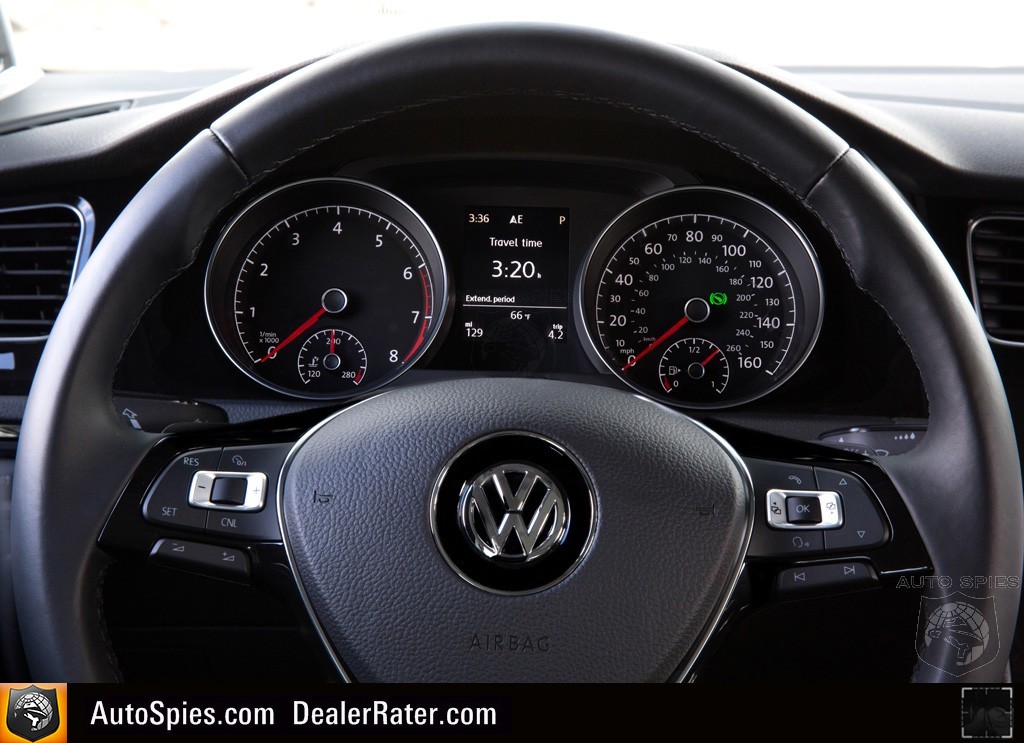
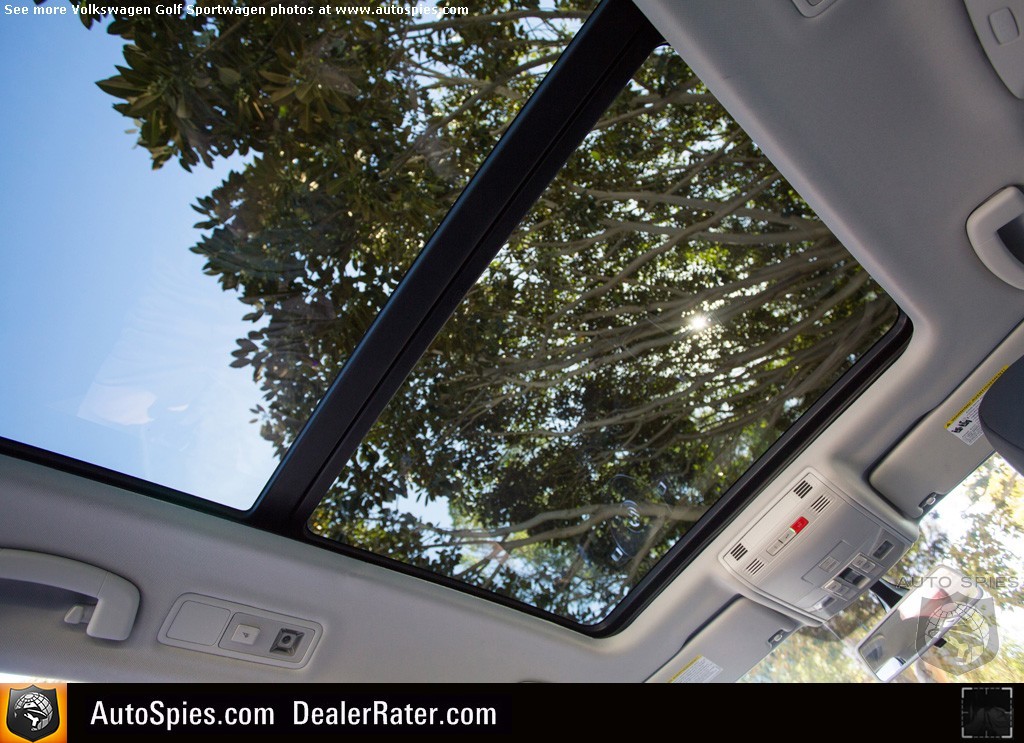
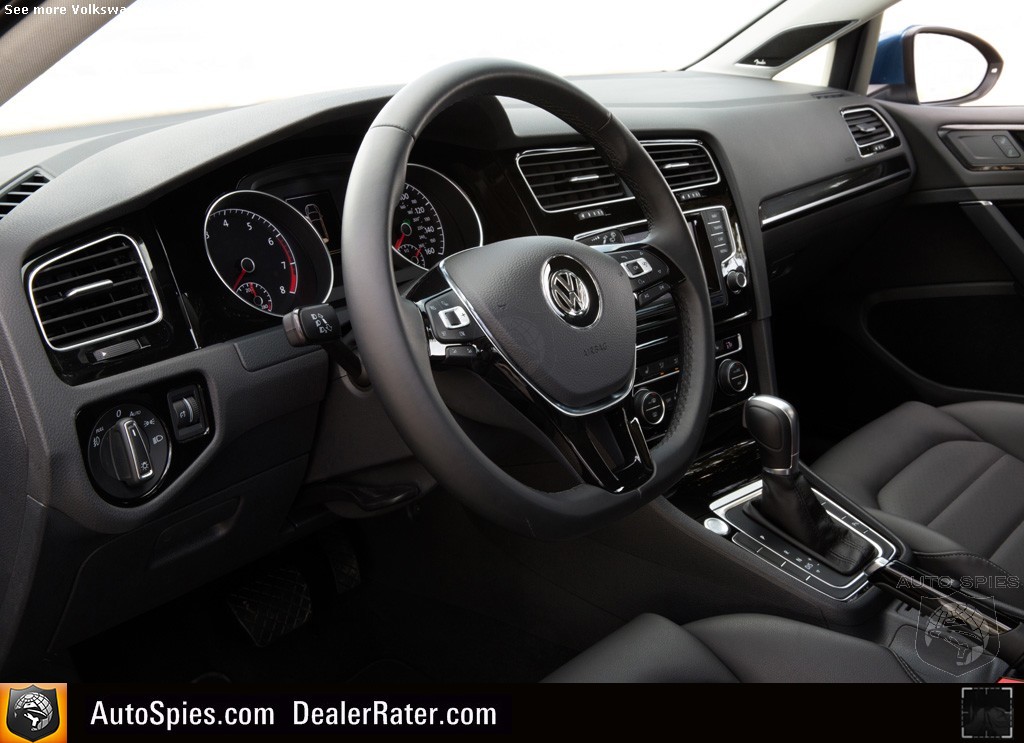
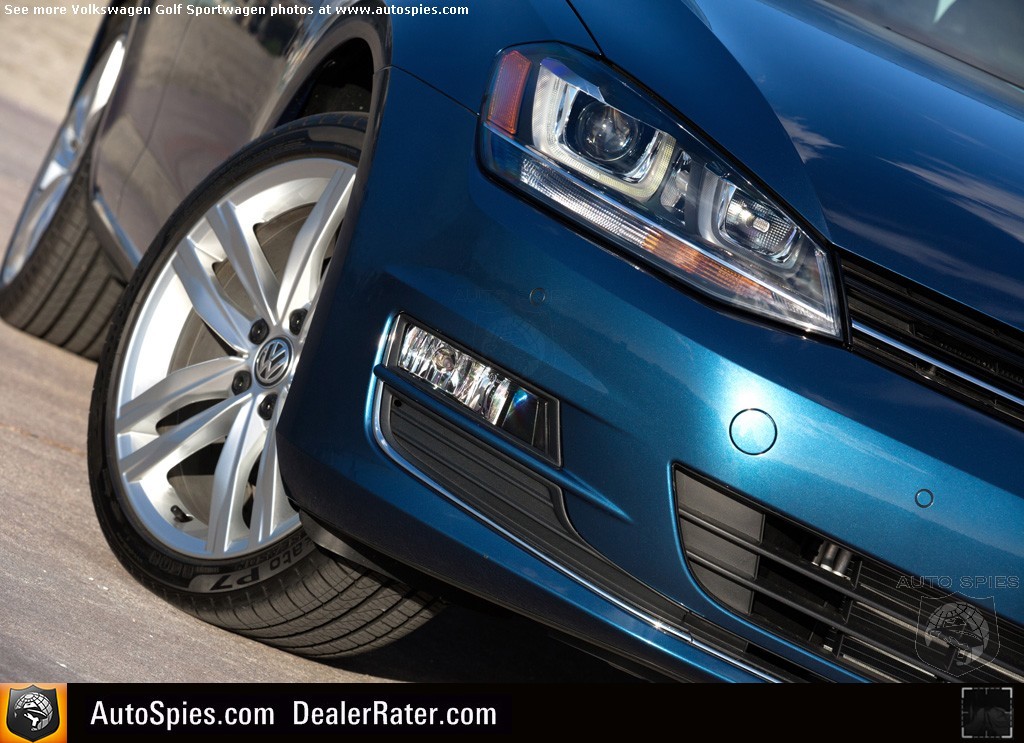
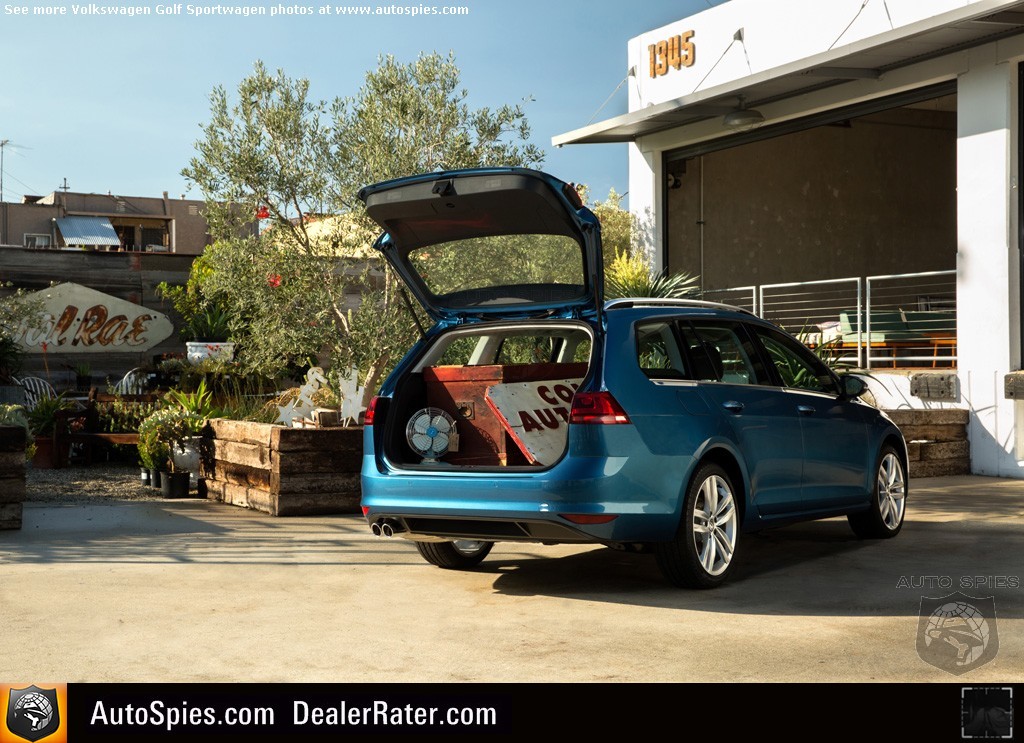
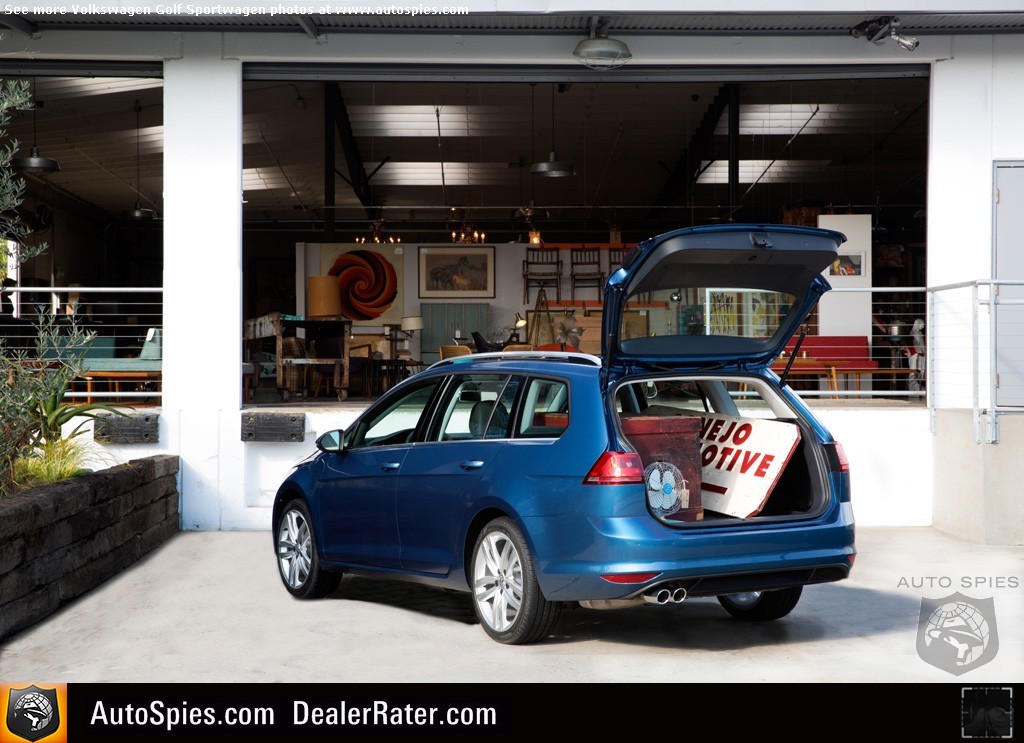
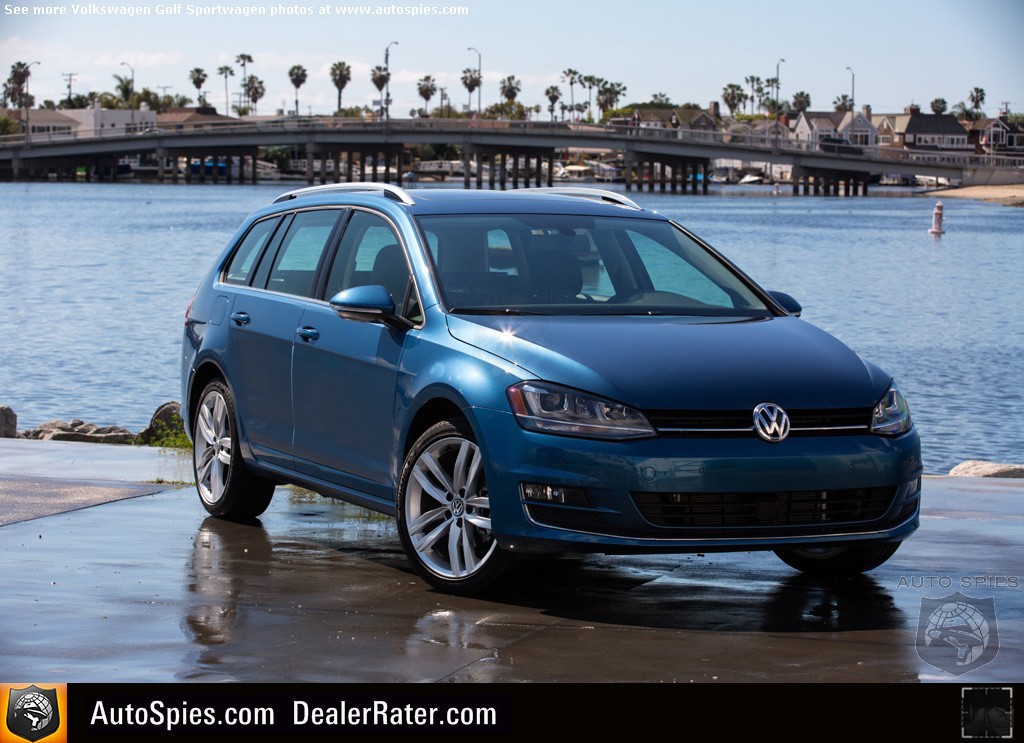
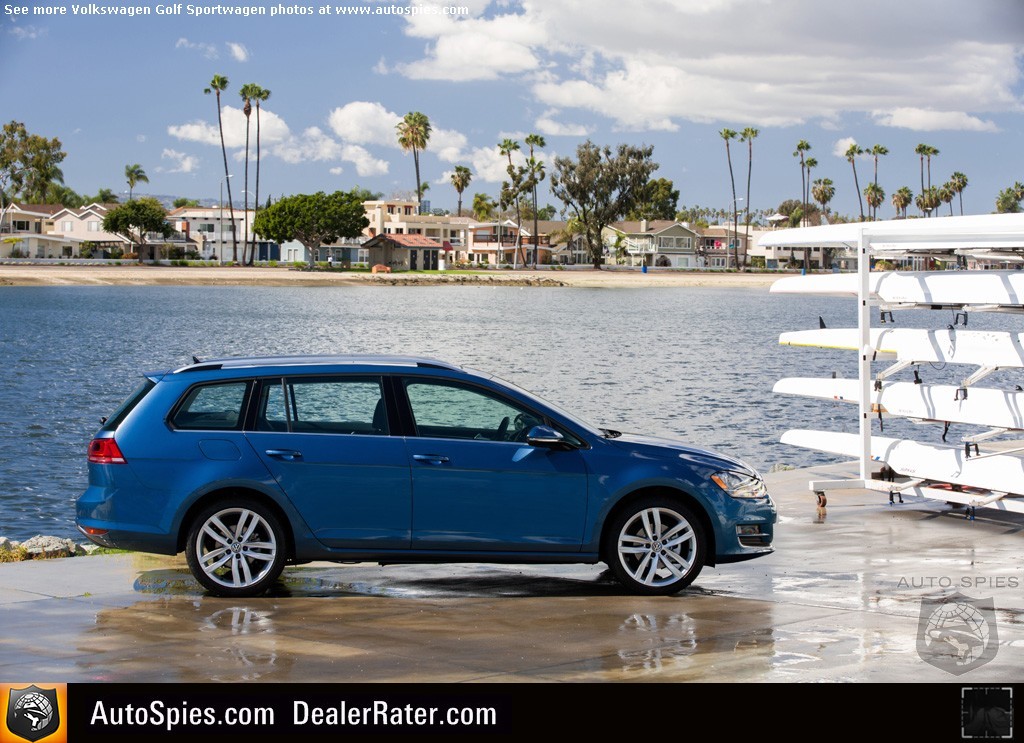
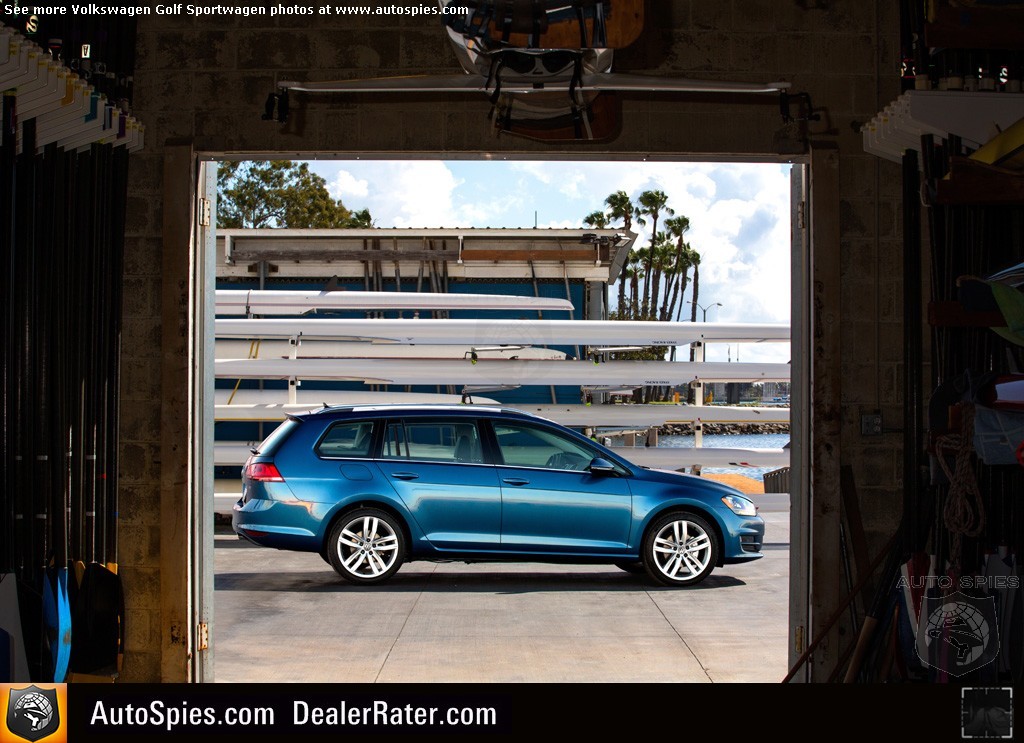
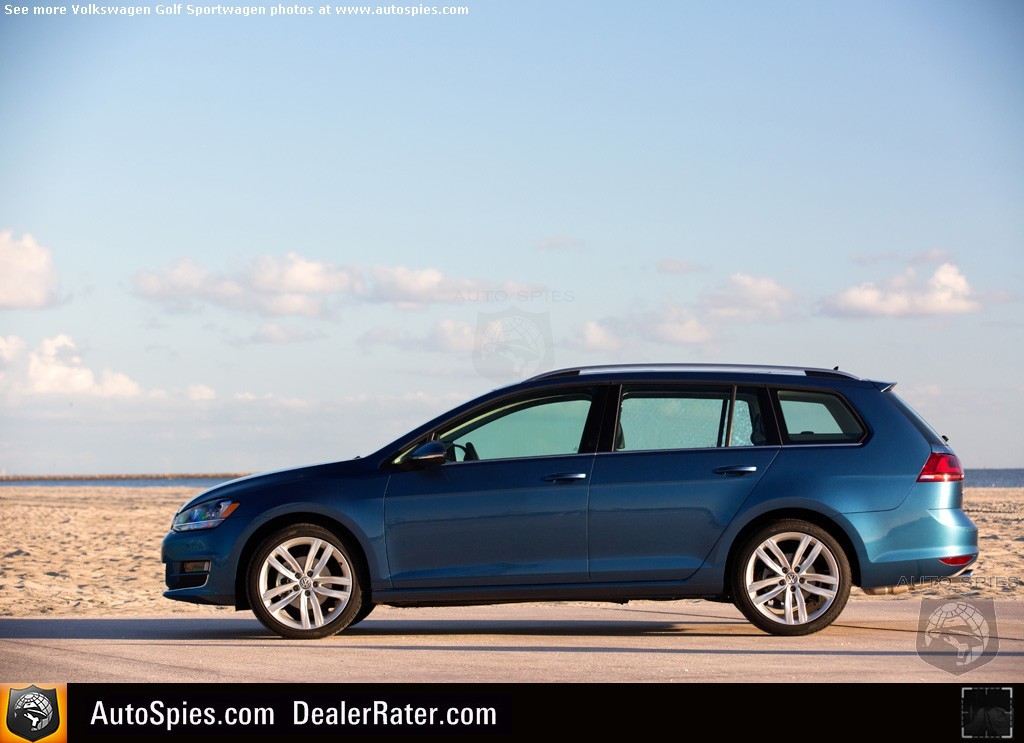
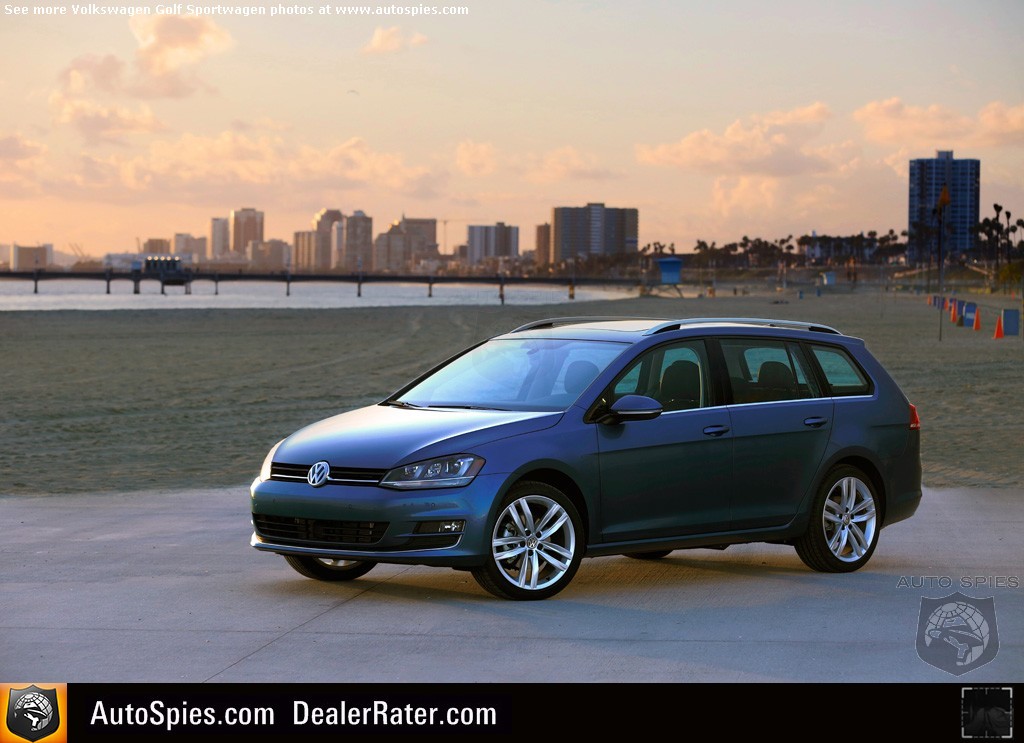
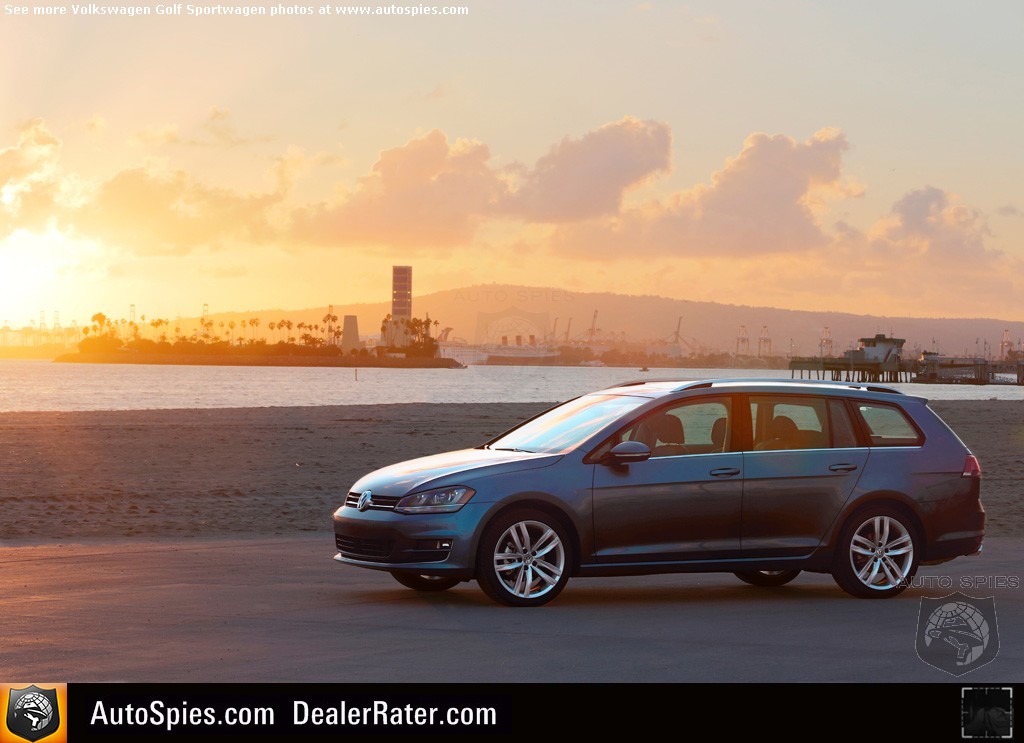
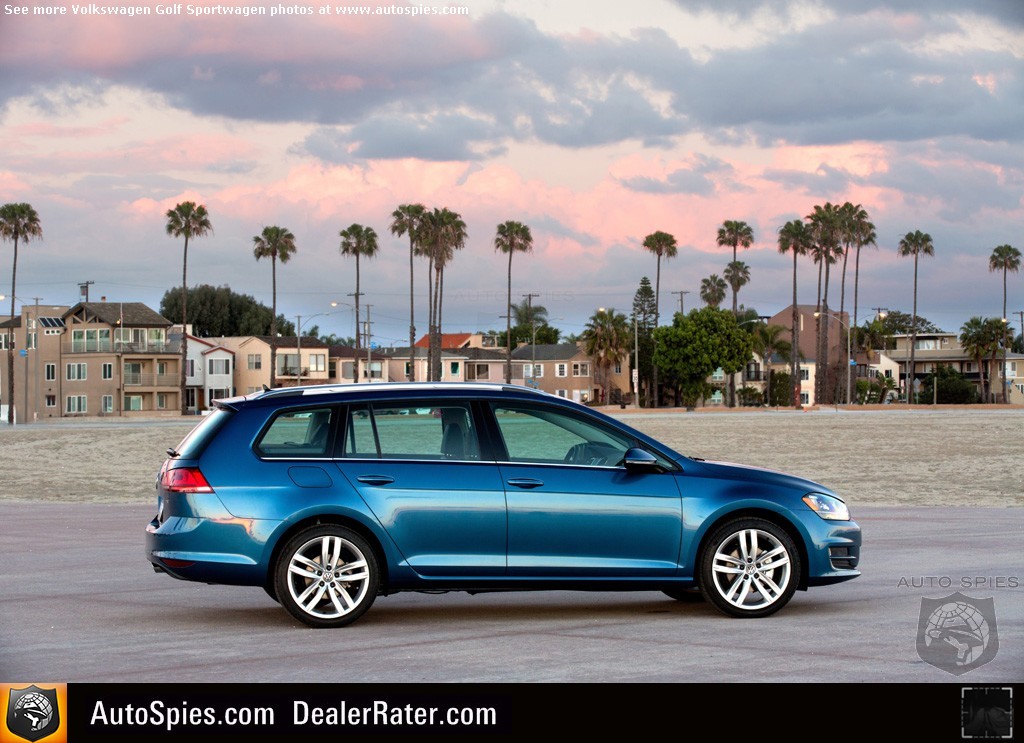
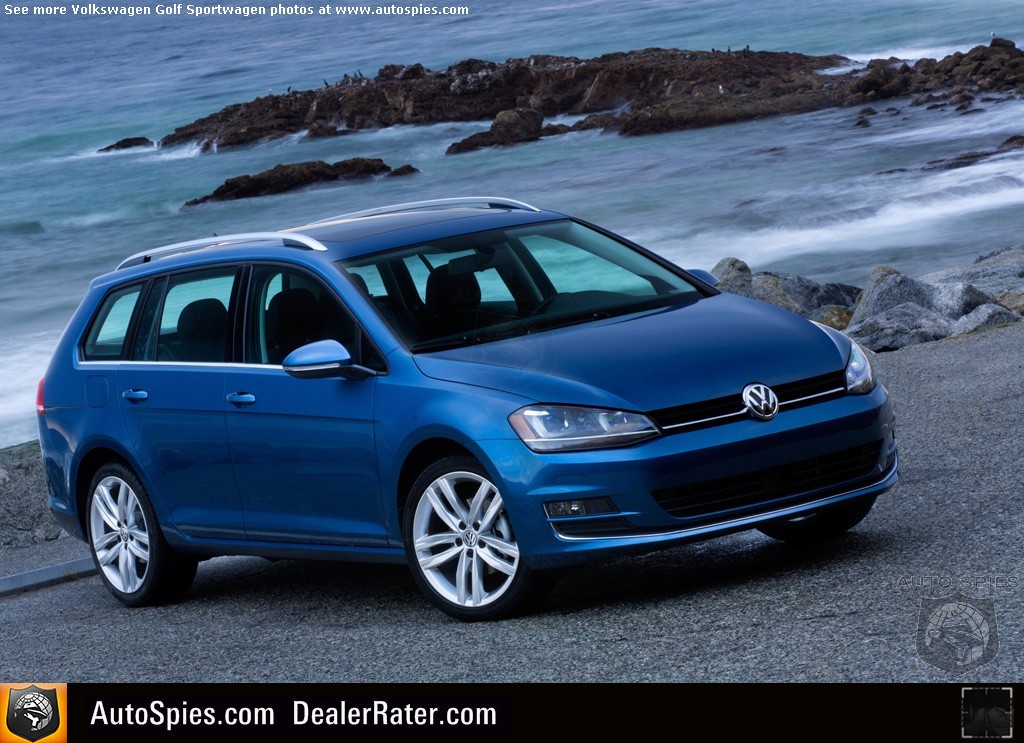
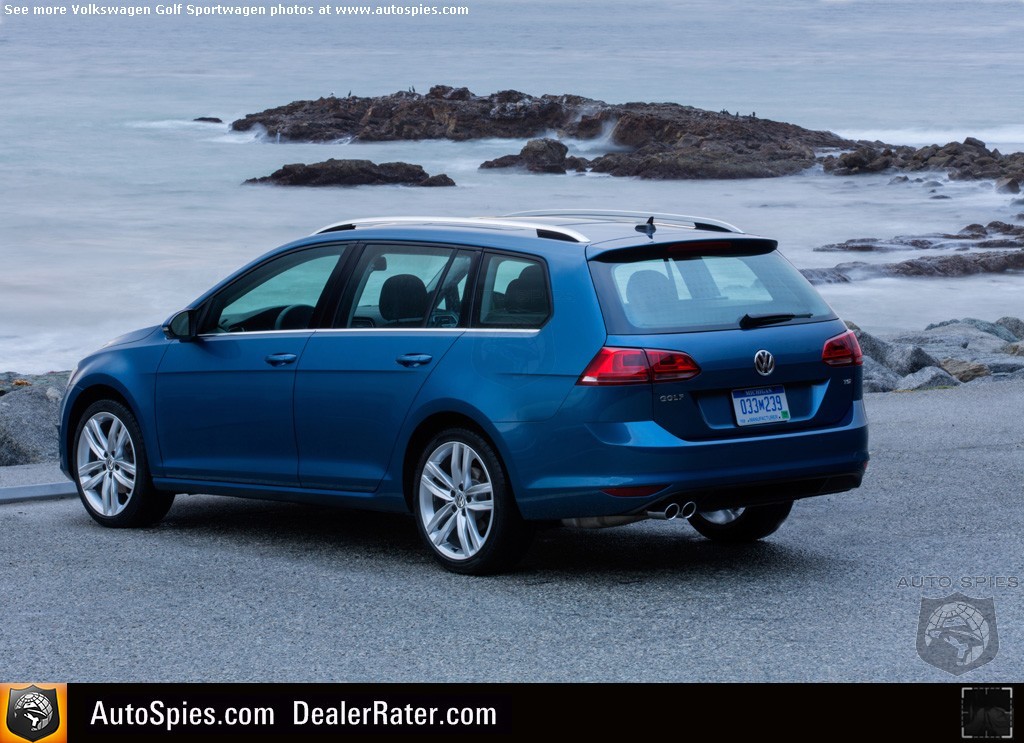
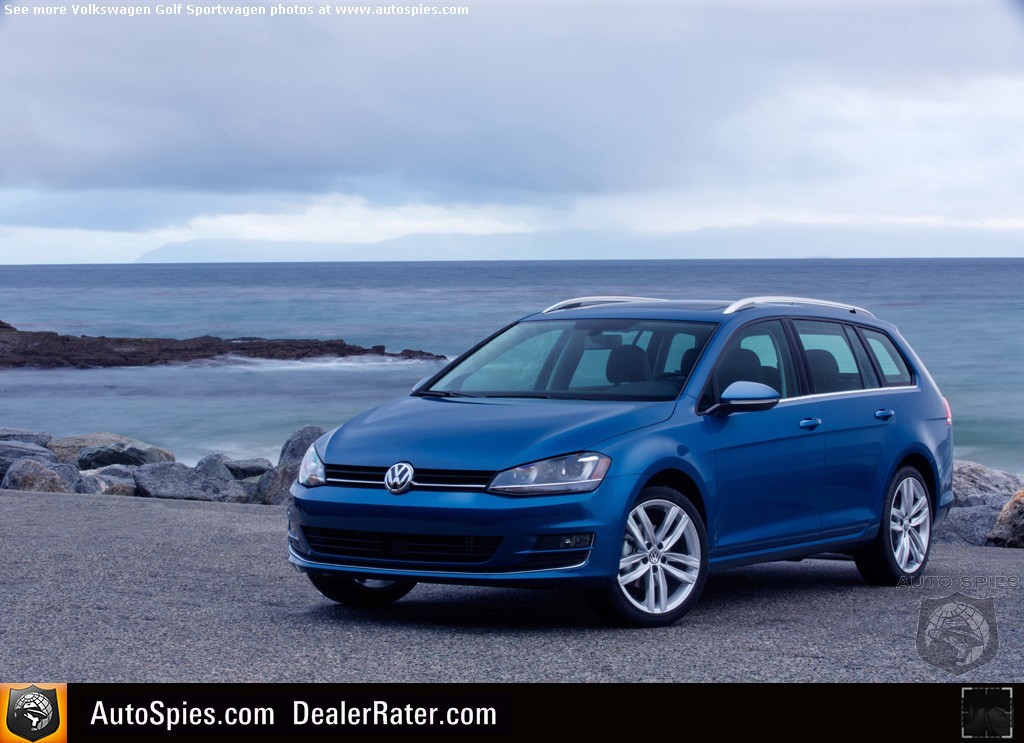
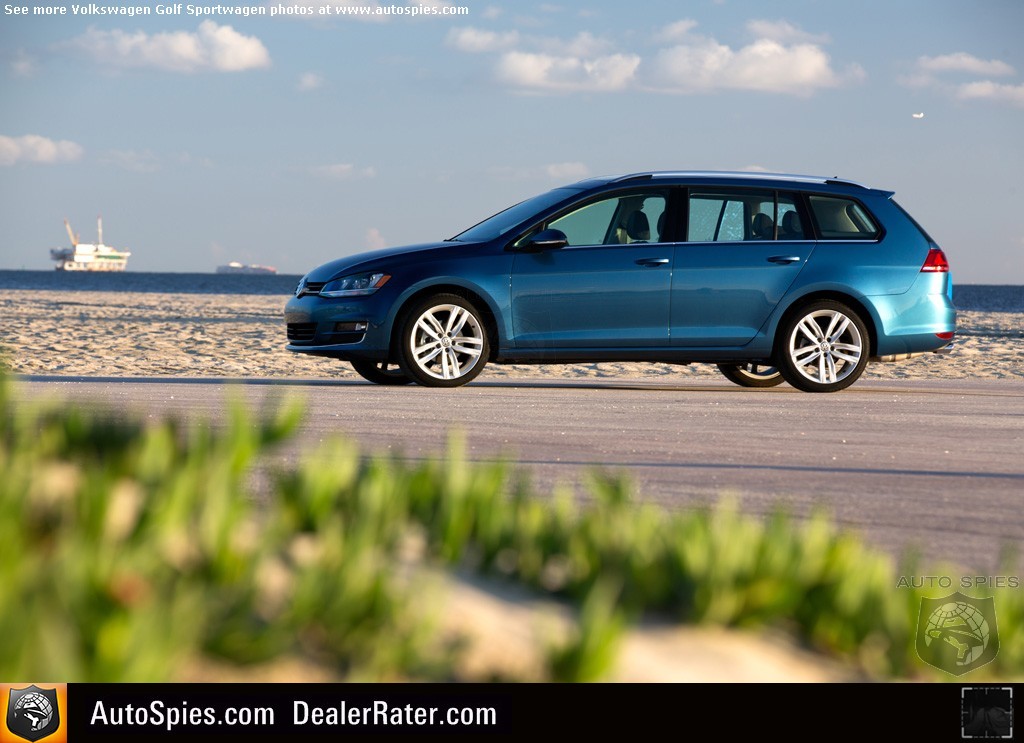
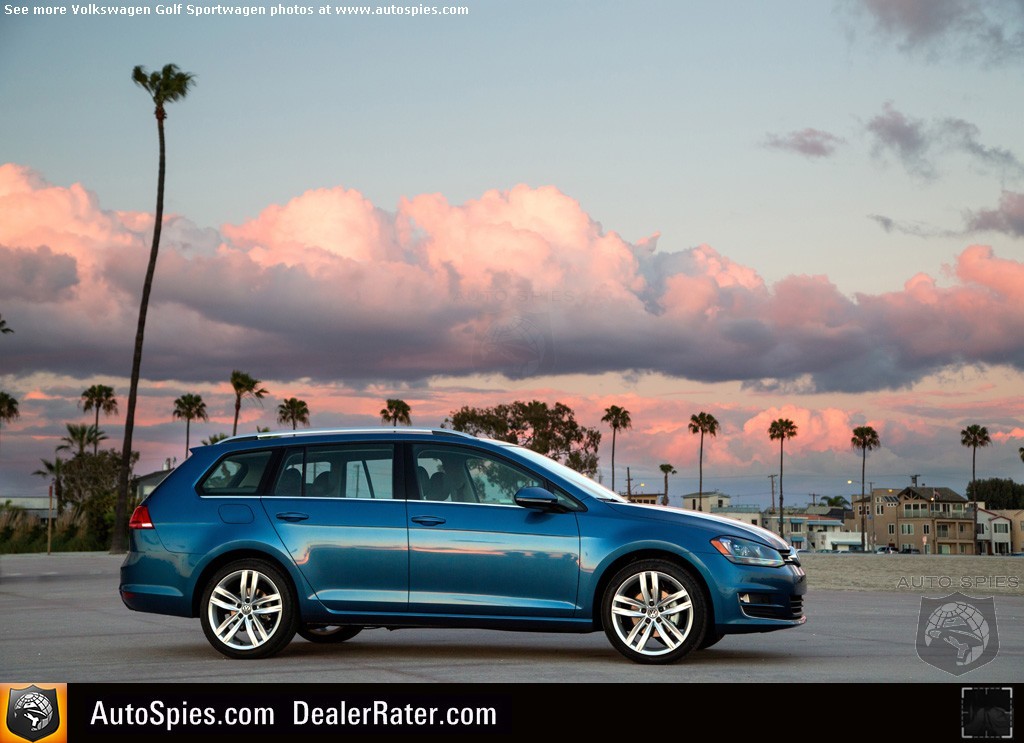
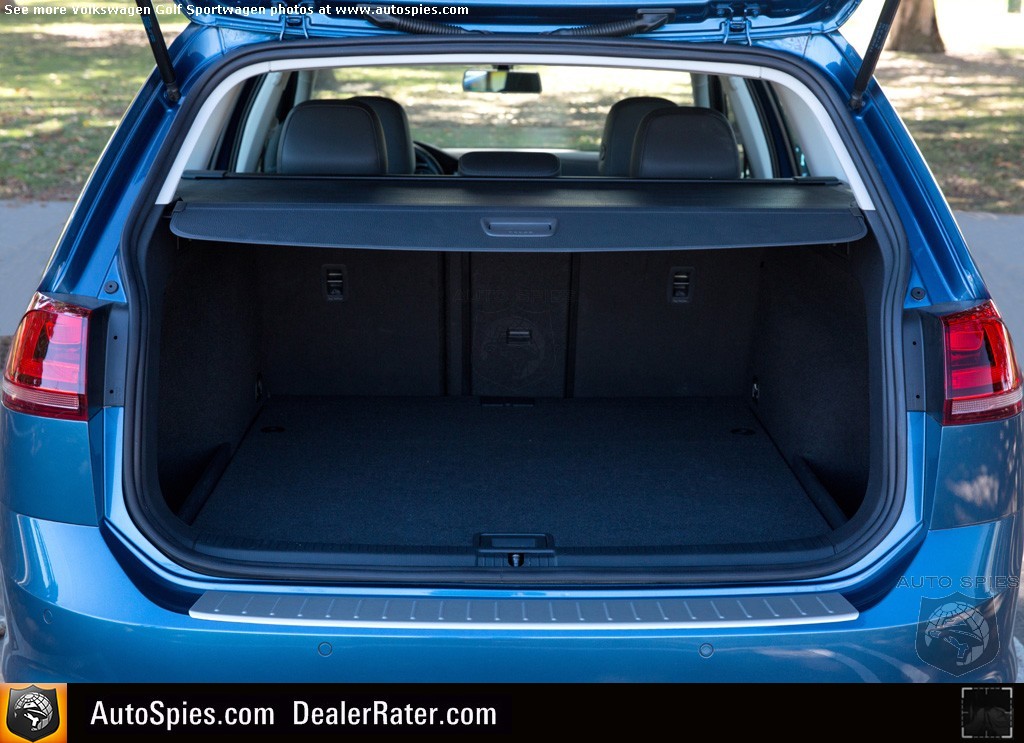
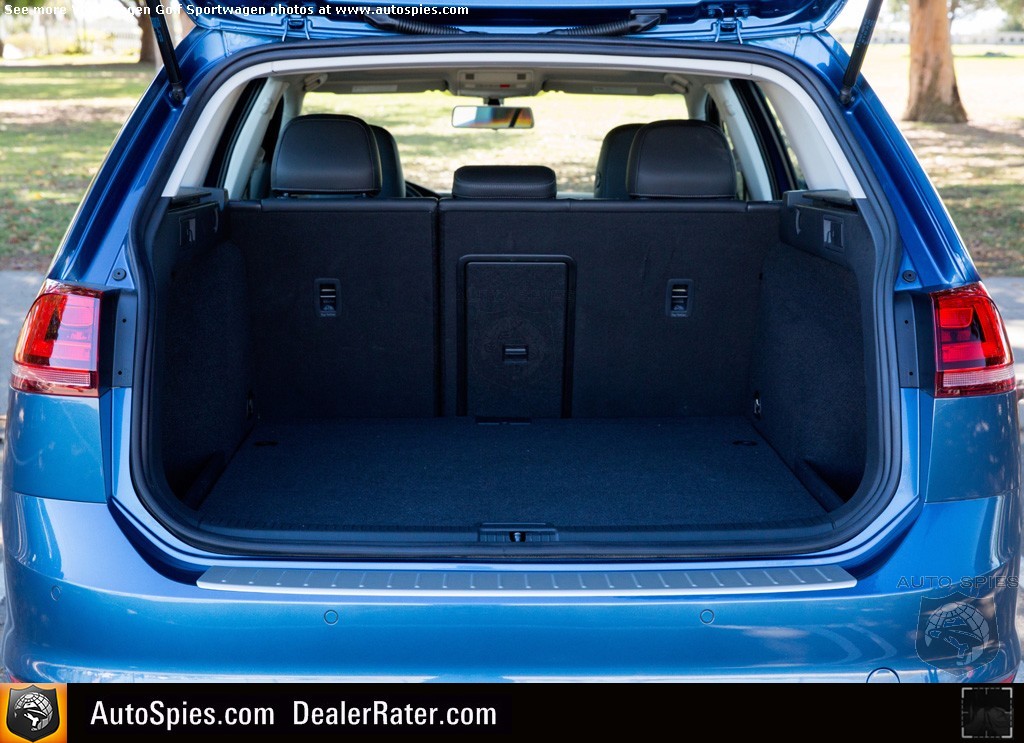
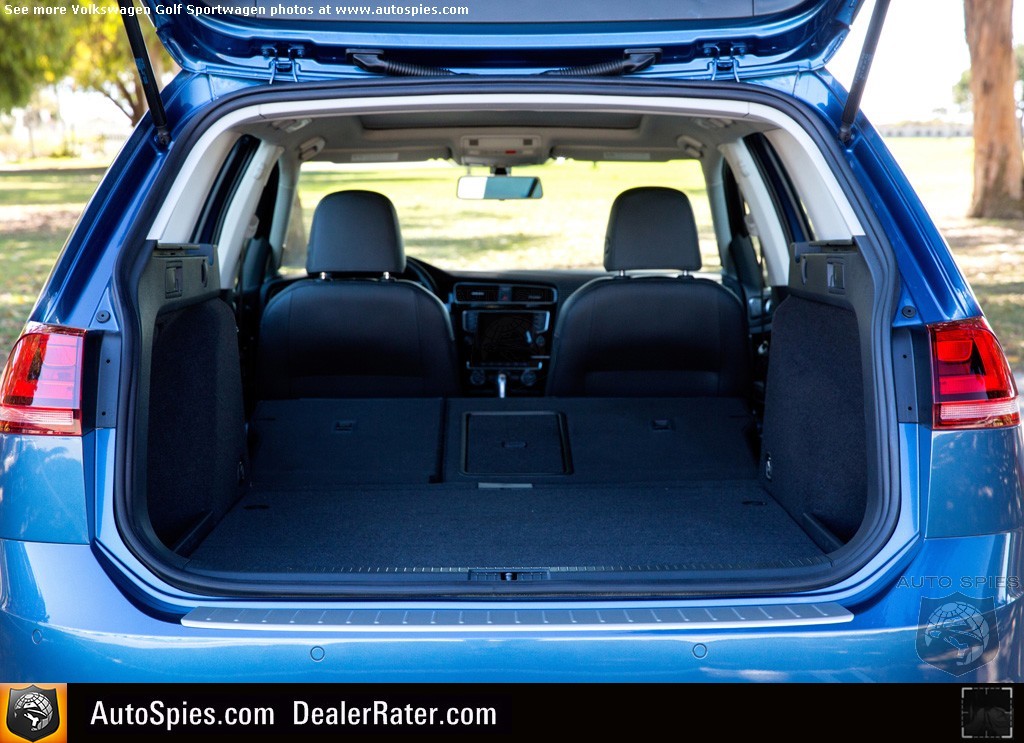
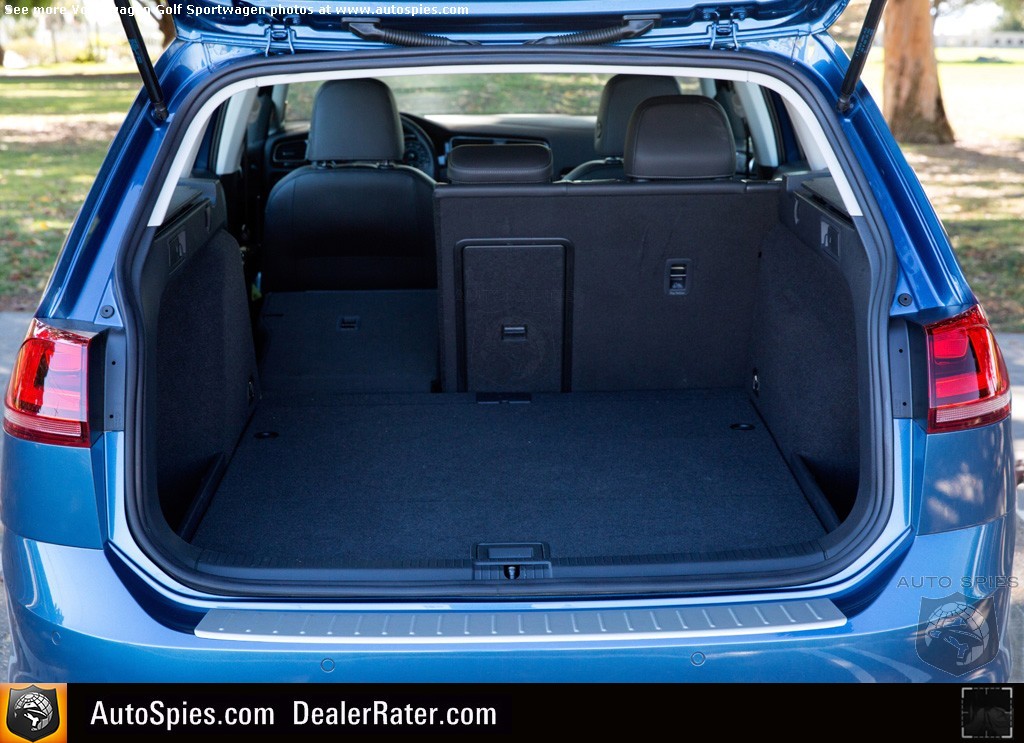
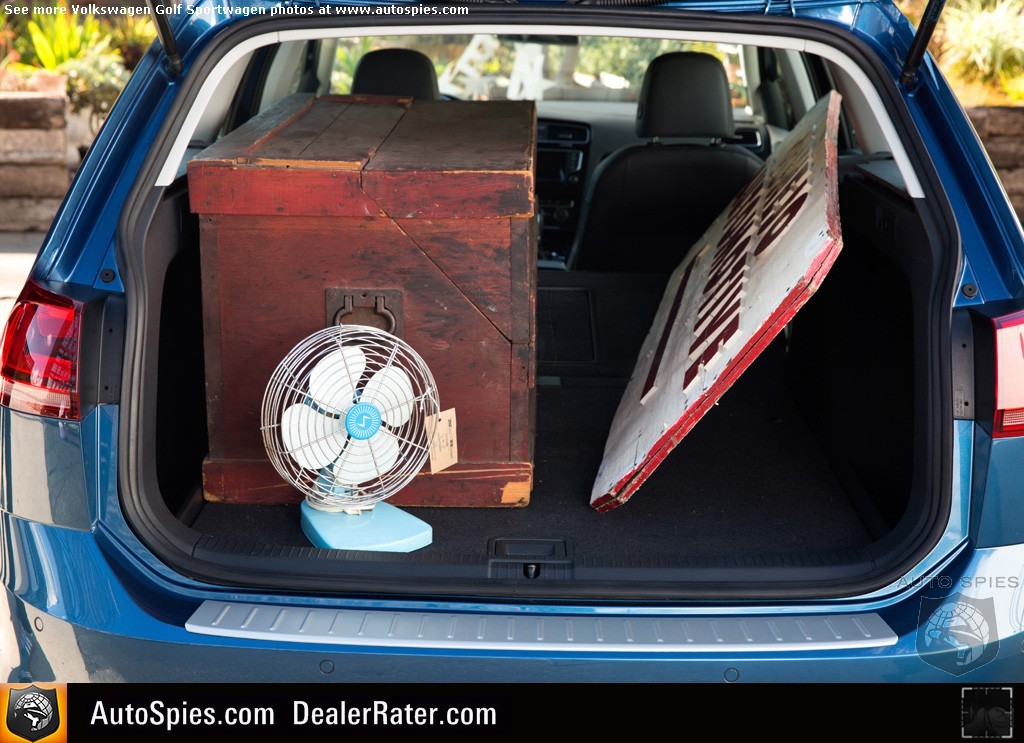
Volkswagen's press release follows:
2015 GOLF SPORTWAGEN: AS VERSATILE AS A COMPACT SUV, AS FUEL EFFICIENT AND FUN-TO-DRIVE AS A COMPACT
Mar 8, 2015
Based on the award-winning Mark 7 Golf, the all-new Golf SportWagen replaces the outgoing Jetta SportWagen
- Thrifty TDI® Clean Diesel and 1.8T TSI® Golf SportWagen models will be offered
- Pricing starts at $21,395 for the S model with manual transmission: a content adjusted reduction of $700 over the previous base Jetta SportWagen
- New TDI S model reduces base Clean Diesel SportWagen pricing by almost $2,000
- Newly available driver assistance technology includes Forward Collision Warning system and Automatic Post-Collision Braking System
- TDI Clean Diesel model offers EPA estimated highway fuel economy of 43 mpg, beating all non-Battery Electric compact SUVs
- Based on flexible Modular Transverse Matrix (MQB) architecture, this all-new car weighs up to 137 pounds less than outgoing Jetta SportWagen
- All-new Golf SportWagen offers increased cargo volume, matching compact SUVs for size and versatility
Herndon, VA/Austin, TX – The latest member of Volkswagen’s seventh-generation Golf family, the Golf SportWagen, goes on sale in U.S. dealerships in April, starting at $21,395 for the 1.8T S model with manual transmission. Volkswagen SportWagen models have long been a top choice for customers who want a versatile and dependable vehicle that provides a sportier driving experience than compact SUVs. Based on the Modular Transverse Matrix (MQB) architecture introduced with the latest Golf generation, the SportWagen replaces the Jetta SportWagen and follows the winning formula introduced with the new Golf line that won the 2015 Motor Trend Car of the Year and the 2015 North American Car of the Year awards. Being bigger yet lighter and more powerful yet more fuel efficient, the SportWagen improves upon its predecessor in every way.
The Golf SportWagen will be offered with two powertrains: the EA888 1.8-liter, 170-horsepower turbocharged and direct-injection four-cylinder TSI® engine mated to a five-speed manual or a six-speed automatic transmission; and the EA288 2.0-liter, 150-hp turbocharged and direct-injection four-cylinder TDI® Clean Diesel, fitted with a six-speed manual or a six-speed DSG® dual-clutch automatic transmission.
The 1.8T model with manual transmission has EPA estimated highway fuel economy of 36 mpg, while the TDI Clean Diesel model with the stick shift gets an impressive 43 highway mpg according to EPA estimates. These figures better all non-BEV compact SUVs on the market, while offering comparable cargo volume—30.4 cubic feet behind the rear seats and 66.5 cubic feet with the seats folded flat.
In addition to a long list of standard amenities, several new comfort and convenience features will be available on the 2015 Golf SportWagen including the Fender® Premium Audio System, a 12-way power driver’s seat and Climatronic® automatic air conditioning. Newly available driver assistance features include the Automatic Post-Collision Braking System, the Forward Collision Warning System, and front and rear Park Distance Control. An available lighting package includes LED Daytime Running Lights and the Adaptive Front-lighting System.
Exterior
The 2015 Golf SportWagen is treated to the same sharpened lines and updated proportions as the other seventh-generation Golf models. That’s because the SportWagen was always intended to be an integral member of the A7 family from the moment the first sketches were drawn at the Volkswagen design studio—led by Walter de Silva (Volkswagen Group Design) and Klaus Bischoff (VW Brand Design).
The SportWagen is wrapped in sheetmetal that is totally modern yet unmistakably part of the Volkswagen Golf DNA. The shape and design elements remain as defined and recognizable as ever, although distinctive elements such as the D-pillar, the roof rails and the unique rear design differentiate the SportWagen from the Golf hatchback. The front end features a hood that slopes down into the front fenders and sports angular horizontal design cues and a slender radiator grille. At the back, the wide rear window, geometric two-part taillights and a wide, low tailgate that integrates the license plate area pay homage to the outgoing Jetta SportWagen and solidify the new car’s place in the Golf family. With a load height of just 24.8 inches and a wide aperture of 40.6 inches, the new Golf SportWagen is even more practical than its predecessor.
At 179.6 inches long and 70.8 inches wide, the Golf SportWagen is 1.1 inches and 0.7 inches larger than the Jetta SportWagen, although overall vehicle height has been reduced by 1.1 inches. These changes help improve the aerodynamics and thus the fuel efficiency, while giving the car really sporty proportions. Thanks to the MQB architecture, which dictates a fixed relationship between the front-wheel centerline and the pedalbox, the front wheels now sit 1.7 inches further forward, giving a premium “cab backward” aesthetic. Along with the new styling, these updated proportions help the SportWagen achieve a lower visual center of gravity and a more dynamic stance.
The SportWagen TSI S model is equipped with 15-inch aluminum-alloy wheels, while the base TDI S gets treated to 16-inch wheels. The SE trimline has 17-inch wheels for both TSI and TDI models, while the topline SEL trims have 18-inch alloys. A panoramic sunroof is standard equipment on all trim models except the S and the SEL has silver roof rails to set it apart from its S and SE brethren.
In addition to the foglights that are fitted on the SE and SEL models, a standalone lighting package is also available for these trims. This package consists of Bi-Xenon headlights and LED daytime running lights, as well as the Volkswagen Adaptive Front-lighting System. This system swivels the main headlight beams by up to 15 percent as the steering wheel is turned to illuminate bends in the road more effectively at speeds of more than 6 mph.
Interior
The upscale environment of the SportWagen cabin is largely shared with the Golf models upon which it is based, but interior volume is increased because of the wagon bodystyle. Occupants are treated to 94.3 cu ft of passenger area volume, up from 91.7 cubic feet for the Jetta SportWagen.
As a result, key interior dimensions have been optimized. Rear-seat leg- and shoulder room are excellent, at 35.6 and 53.9 inches, respectively. Front seat passengers also benefit from the SportWagen’s spacious interior, with 41.2 inches of legroom and 55.9 inches across the shoulders. Although the new wagon’s overall height has been decreased by 1.1 inches, both front and rear headroom have been improved to 38.6 inches.
The SportWagen has a cavernous trunk that’s in line with those of compact SUVs. With the rear seats up, the SportWagen boasts 30.4 cu ft of space: when the 60:40 split rear seat is fully folded, that figure rises to an enormous 66.5 cu ft of storage. The split folding rear seats are now accessed by release levers in the cargo area, maximizing convenience.
In addition to the expansive interior space, the driver controls are positioned for optimal ergonomics and usability. Seat placement, shifter height and even the spacing between the pedals have all been fine-tuned as well. This new driver-centric design focus is evident from the center stack, which is now angled towards the driver, a feature frequently seen in premium luxury or performance vehicles. White backlighting for the controls further highlights this upscale ambience, as well as the use of premium materials throughout, such as the leather-wrapped handbrake, shifter knob and steering wheel, the soft-touch plastics and piano-black trim.
An equal amount of attention has been paid to maximizing comfort and convenience, even on the entry-level S trim. In addition to its standard V-tex leatherette seating surfaces, this base model comes well equipped with a long list of modern comfort, convenience and entertainment features, including power windows, locks and mirrors, a multifunction steering wheel, Bluetooth® technology and VW Car-Net® connected car features, and a Media Device Interface (MDI) with smartphone connectivity.
The SportWagen’s touchscreen infotainment center, standard on all models, is shared with the rest of the Golf family. The 5.8-inch touchscreen display utilizes a capacitive touch sensor (as in smartphones, tablets, and the like) rather than the more common resistive touchscreens that require pressure, enabling gesture controls like swiping and even pinch-zooming.
This infotainment module offers an available navigation system, as well as the expected audio functions (including standard SiriusXM® Satellite radio) and car analytics and settings. This display also has a proximity sensor function, which senses when a hand is nearby and automatically switches its display to a more finger-friendly layout. The MDI is now housed in the center stack, while more traditional media such as CDs and SD cards can be inserted into slots in the large glovebox.
KESSY® keyless entry with push-button start is standard equipment on all TDI trims and on TSI SE and SEL trim levels. The highly acclaimed Fender Premium Audio System is standard on all SE and SEL trims. The top-of-the-line SEL variants come loaded with the navigation system, Climatronic automatic dual-zone climate control, ambient lighting with LED interior reading lights, and front comfort sport seats that include a 12-way power driver’s seat.
Powertrains
Like the rest of the seventh-generation Golf family, the Golf SportWagen features compact turbocharged and direct-injection engines throughout the entire trim range. The TSI gasoline unit is a member of the latest EA888 engine family and replaces the 2.5-liter five-cylinder engine of the previous Jetta SportWagen model. This 170 horsepower1.8-liter turbocharged and direct-injection four-cylinder TSI engine is mated to either a five-speed manual or a six-speed automatic transmission. When equipped with the six-speed automatic transmission, the Golf SportWagen’s EPA estimated highway fuel economy has improved by 5 mpg over the previous 2.5-liter Jetta SportWagen, to 35 mpg. The EPA rating for the manual transmission model is 36 mpg on the highway.
The TDI Clean Diesel model is powered by the new EA288 150 horsepower, 2.0-liter turbocharged and direct-injection diesel engine, driving the front wheels through either a six-speed manual or a six-speed DSG® dual-clutch automatic transmission. Compared with the previous Jetta SportWagen’s TDI Clean Diesel engine, EPA estimated fuel economy is improved from 42 mpg on the highway for the manual transmission model to 43 mpg, and from 39 mpg for the automatic transmission model to 42 mpg.
TSI engine in detail
The EA888 engine line is a state-of-the-art design that uses intelligent downsizing to deliver comparable power and torque to the outgoing engine, while at the same time improving efficiency substantially. This engine produces 170 horsepower at 4800 rpm, the same maximum output as the 2.5-liter unit it replaces, but its increased torque peak of 199 lb-ft (for automatic transmission models) occurs much lower in the power band. Because the broad swathe of torque starts at 1500 rpm—2750 rpm lower than in the previous engine—and lasts until 4750 rpm, the engine offers much better acceleration as well as helping to deliver better fuel economy and lower emissions than before.
Augmenting the EA888’s 16-valve, dual-overhead-camshaft layout is variable cam phasing on the intake side. The single-scroll IHI turbocharger feeds intercooled air through the aluminum-alloy crossflow head down into the cylinders, where it meets fuel delivered by a high-pressure direct-injection system.
At just 290 pounds, the new engine is also lighter than the five-cylinder unit, thanks to a combination of compact design, streamlined componentry, and a focus on lightweight materials. The cast-iron engine block uses a casting with a wall thickness of just 0.12 inches to reduce its weight to 72 pounds, while a lightweight polymer oilpan and aluminum-alloy screws and fasteners also trim mass. Other changes that help the engine shed pounds include a reduction from eight to four counterweights on the crankshaft and the use of smaller diameter main bearings.
The engine is also extremely compact, illustrated by the way in which the exhaust manifold has been integrated directly into the cylinder head. This not only improves the system coolant operation (aiding in rapid warm-up and improving efficiency) but also allows greater thermal management of the exhaust stream.
TDI engine in detail
The EA288 turbodiesel engine family is designated the modular diesel matrix, or MDB, and will form the basis for future U.S.-market Volkswagen diesel products. Just like the MQB platform, the concept is best understood by visualizing the MDB engine as a grouping of standardized modules available across the Volkswagen Group.
The EA288 is a 2.0-liter, four-cylinder turbocharged and direct-injection diesel engine, a thorough update from the previous unit. Despite the similarity in basic specifications, the only aspect that carries over from the previous EA189 unit is the cylinder bore spacing. The new engine produces 150 horsepower—10 more than before—at 3500 rpm, as well as 236 lb-ft of torque at 1750 rpm. This high torque output is another compelling argument for diesel engines, along with fuel efficiency.
The compact EA288 engine has the intercooler for its turbocharger system integrated directly into the intake manifold, which serves a two-fold purpose of increasing throttle response and performance as well as lowering emissions. The engine block is cast iron, with a forged steel crankshaft that runs in five main bearings and has four counterweights. In order to counteract engine vibration and maintain smooth operation, the EA288’s crankshaft is connected to two gear-driven counter-rotating balancer shafts that spin at twice engine speed. Friction has been reduced by about 15 percent in the engine, thanks to the use of roller bearings for the drivetrain side camshaft, increased piston-to-wall clearance, and lower piston-ring tension, among other measures.
The aluminum-alloy crossflow cylinder head has a number of unique features. First, the camshafts are integrated into a separated housing by a thermal joining process, ensuring a very rigid camshaft bearing while keeping the weight low. Second, each overhead camshaft operates one intake valve and one exhaust valve per cylinder (as opposed to one camshaft for intake valves only and one for exhaust), allowing for greater air delivery and swirl.
Like its gasoline-powered brethren, the EA288 Clean Diesel TDI engine places strong emphasis on thermal management, which is evident in the cylinder head’s two-section coolant jacket, as well as a three-part cooling circuit and switchable coolant pump. Compared to the previous engine, emissions are reduced by up to 40 percent, helped by siting the exhaust after-treatment module close to the engine and by the use of a low-pressure exhaust gas recirculation system.
Chassis
The Golf SportWagen shares the same MQB chassis architecture as the rest of the Mark 7 Golf line. The unitary construction chassis has two solid-mounted subframes with bolt-on front fenders, and utilizes new technologies such as the laser clamp welder, which produces “wobble seam” welds in a wave pattern to maximize strength in a limited space, offering up to four times the strength of a traditional spot weld.
The stamped steel body and chassis boasts a large percentage of high-strength, hot-formed steel. This technology, along with the use of newly developed ultra-high-strength steels, allows much of the chassis and body to be constructed from thinner and lighter parts without any loss in strength. Additionally, thanks to the use of selective thickness for parts, a single component can be tailor-rolled to have as many as 11 zones of varying thicknesses.
Thanks to the extensive use of modern construction techniques and high- and ultra-high strength steels, the new SportWagen is lighter than the outgoing Jetta SportWagen by up to 137 pounds, despite a plethora of new and upscale features, and offers an enhanced crash structure. Throughout the car, incredible attention to detail has optimized components—such as the seats, air conditioning unit, and even the electrical architecture—to help save weight.
Suspension
The all-new Golf features a strut-type front suspension. At the back, the TSI models have a multilink arrangement with coil springs, telescopic dampers, and an anti-roll bar. The TDI Clean Diesel models use a compact torsion beam rear suspension with coil springs and telescopic dampers.
The seventh-generation Golf braking system has substantial 11.3-inch vented front discs and 10.7-inch solid rear discs (10.0 inches for the TDI) with standard three-channel ABS with electronic brake pressure distribution. The rack-and-pinion steering features electric power assist and features a 13.6 to one ratio that allows for 2.76 turns from lock to lock.
All 2015 Golf models are equipped with the XDS® Cross Differential System—a feature previously only seen on the performance-oriented GTI model. This technology acts somewhat like an electronic substitute for a traditional mechanical limited-slip differential, working by actively monitoring data from each wheel sensor. If the suspension becomes unloaded, the system automatically applies braking to the driven inside wheel as needed to help reduce understeer (the tendency for the front wheels to run wide). This not only helps the Golf’s stability, but also improves handling and cornering performance.
Safety Systems
Like the rest of the Golf line, the SportWagen provides a combination of both passive and active safety systems. It has been engineered to meet or exceed all current crash regulations and features no fewer than six airbags as standard along with a number of electronic safety systems. All Golf models are equipped with standard Electronic Stability Control (ESC).
Driver Assistance Systems
The SE and SEL models are also available with the Driver Assistance Package that adds a Forward Collision Warning and front and rear Park Distance Control systems. The Forward Collision Warning system uses a radar sensor to help monitor the distance of traffic ahead of the vehicle. The sensor acquires both the position of stationary cars and motorcycles as well as those moving in the same direction as the Golf. Within physical system limits, Forward Collision Warning helps alert the driver of critical front-end collision situations, both acoustically and visually by a clear warning symbol in the instrument cluster.
The new Automatic Post-Collision Braking system is standard on the SportWagen. This builds on the premise that a collision is rarely a single, instantaneous action, but rather a series of events that follow the initial impact—the most significant of which can cause additional collisions. The Automatic Post-Collision Braking system addresses this by applying the brakes when a primary collision is detected by the airbag sensors, thus helping to reduce residual kinetic energy and, in turn, the chance of additional damage.
Limited Warranty and Scheduled Maintenance
The 2015 Golf SportWagen models are offered with Volkswagen’s standard five-year/60,000-mile (whichever occurs first) powertrain limited warranty and three-year/36,000-mile new vehicle limited warranty. In addition, a three-year/36,000-mile (whichever occurs first) roadside assistance program is standard, as is the one-year/10,000-mile (whichever occurs first) Carefree Maintenance® Program that covers scheduled maintenance services during this period, at no additional charge.
MODEL LINE-UP
Golf SportWagen 1.8T S
The SportWagen 1.8T S has a starting MSRP of $21,395 and features a standard turbocharged and direct-injection1.8-liter engine; 15-inch aluminum-alloy wheels; Bluetooth® technology; a touchscreen radio; Sirius XM® Satellite Radio trial; a Media Device Interface (MDI) with smartphone integration; V-tex leatherette seating surfaces; power windows; power door locks; and air conditioning. An automatic transmission is available as an $1,100 option.
Golf SportWagen 1.8T SE
Available only with the six-speed automatic transmission, the SE starts at $26,995 and adds the following features over the S: 17-inch aluminum-alloy wheels; front foglights; a panoramic sunroof; KESSY® keyless access with push-button start; a rearview camera, and the Fender® Premium Audio System. An optional Lighting package is available for $995 and includes Bi-Xenon headlights with the Adaptive Front-lighting System, LED DRLs, and ambient interior lighting with LED interior reading lights. The $695 Driver Assistance package includes the Forward Collision Warning System and front and rear Park Distance Control.
Golf SportWagen 1.8T SEL
Building on the specifications and layout of the TSI SE, the top gasoline-powered SportWagen trim starts at $29,345 and adds: 18-inch aluminum-alloy wheels; silver roof rails; a navigation system; Climatronic® automatic air conditioning; sport comfort seats with a 12-way power driver’s seat; and ambient lighting with LED interior reading lights. The Lighting and Driver Assistance packages are available on the SEL as well.
Golf SportWagen TDI S
The line-up of Clean Diesel Golf SportWagen models largely mirrors its gasoline siblings in terms of features and packages. The base TDI S starts at $24,595 and offers a six-speed manual gearbox and 16-inch aluminum-alloy wheels as standard, with a dual-clutch DSG automatic available for an extra $1,100. KESSY keyless access with push-button start and a rearview camera are among the standard features.
Golf SportWagen TDI SE
Starting at $27,995, the TDI SE has the same list of equipment and optional packages as its gasoline-powered counterpart, the 1.8T SE, including the Fender Premium Audio System, automatic headlamps and a panoramic sunroof. The Lighting and Driver Assistance package are available. The DSG transmission is an $1,100 option.
Golf SportWagen TDI SEL
Starting at $30,345, the TDI SEL’s standard equipment mirrors the 1.8T SEL, adding features such as a navigation system, Climatronic automatic air conditioning, and sport seats with 12-way power adjustment for the driver. Both Lighting and Driver Assistance options packages are available on this trim. The six-speed manual transmission is standard, with the option of the DSG automatic ($1,100 extra).
Competitive Set
Subaru Outback
Subaru XV Crosstrek
Toyota Prius v